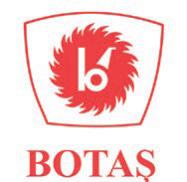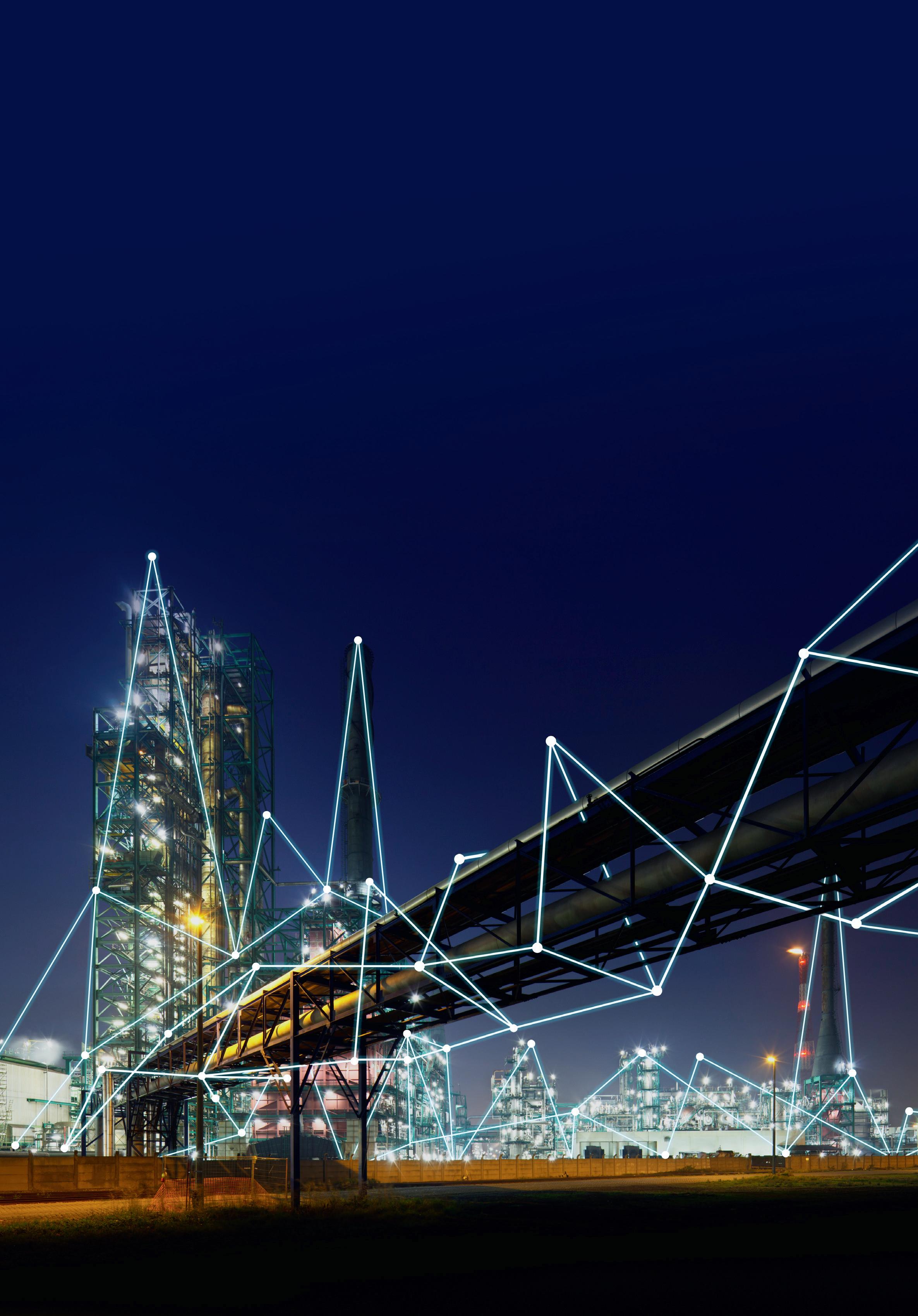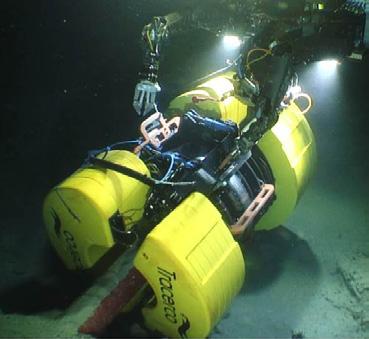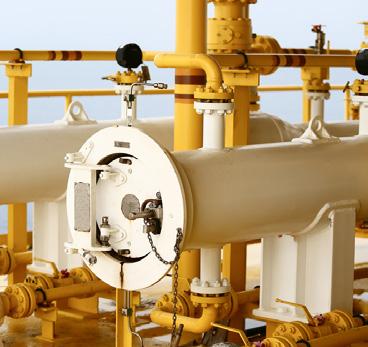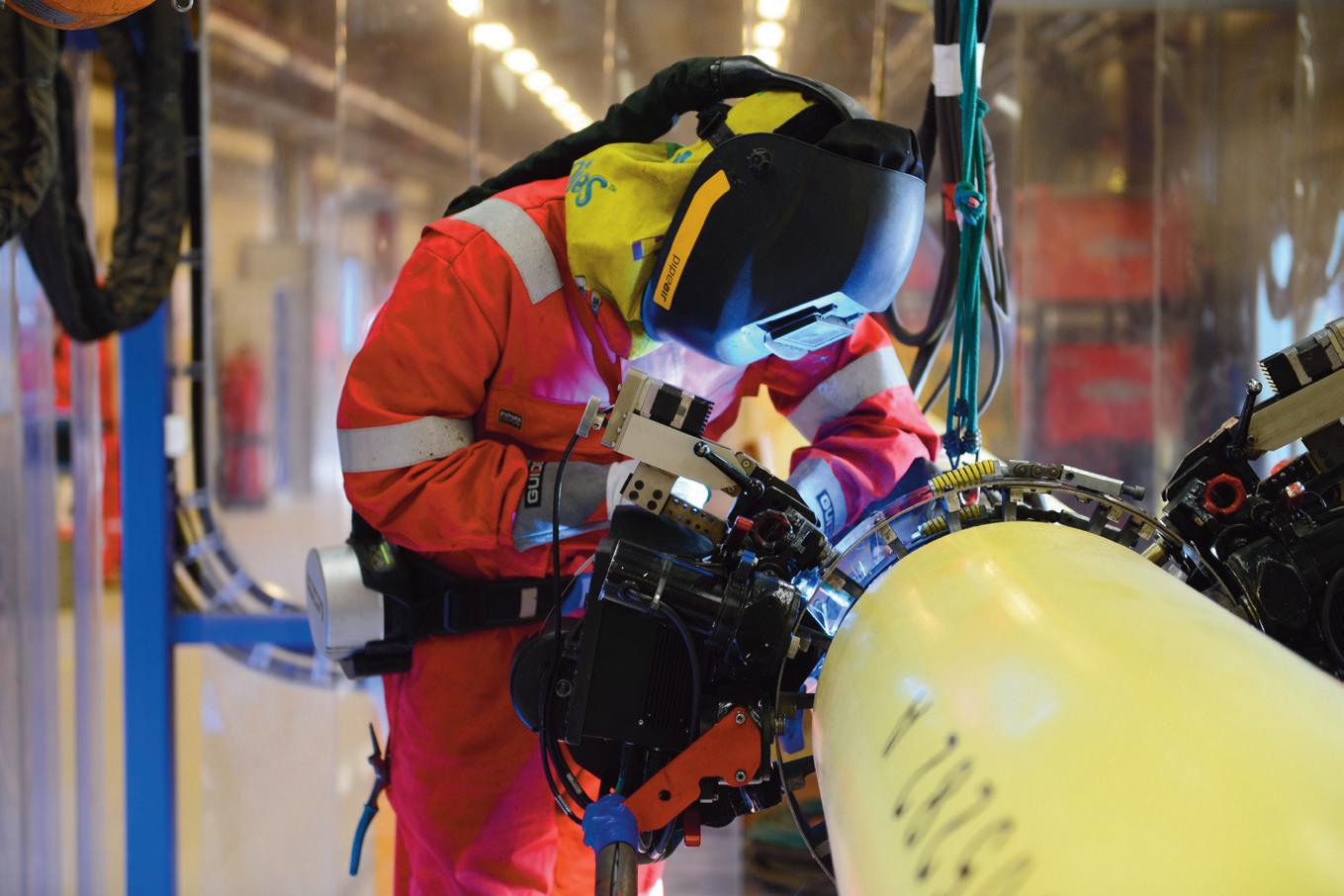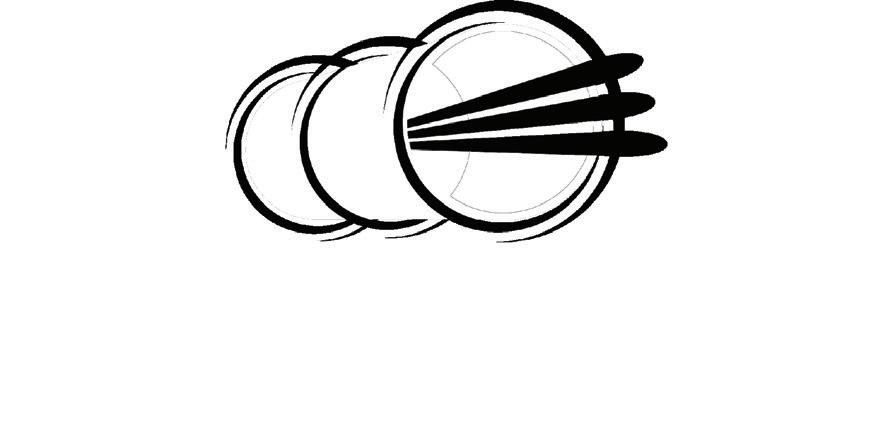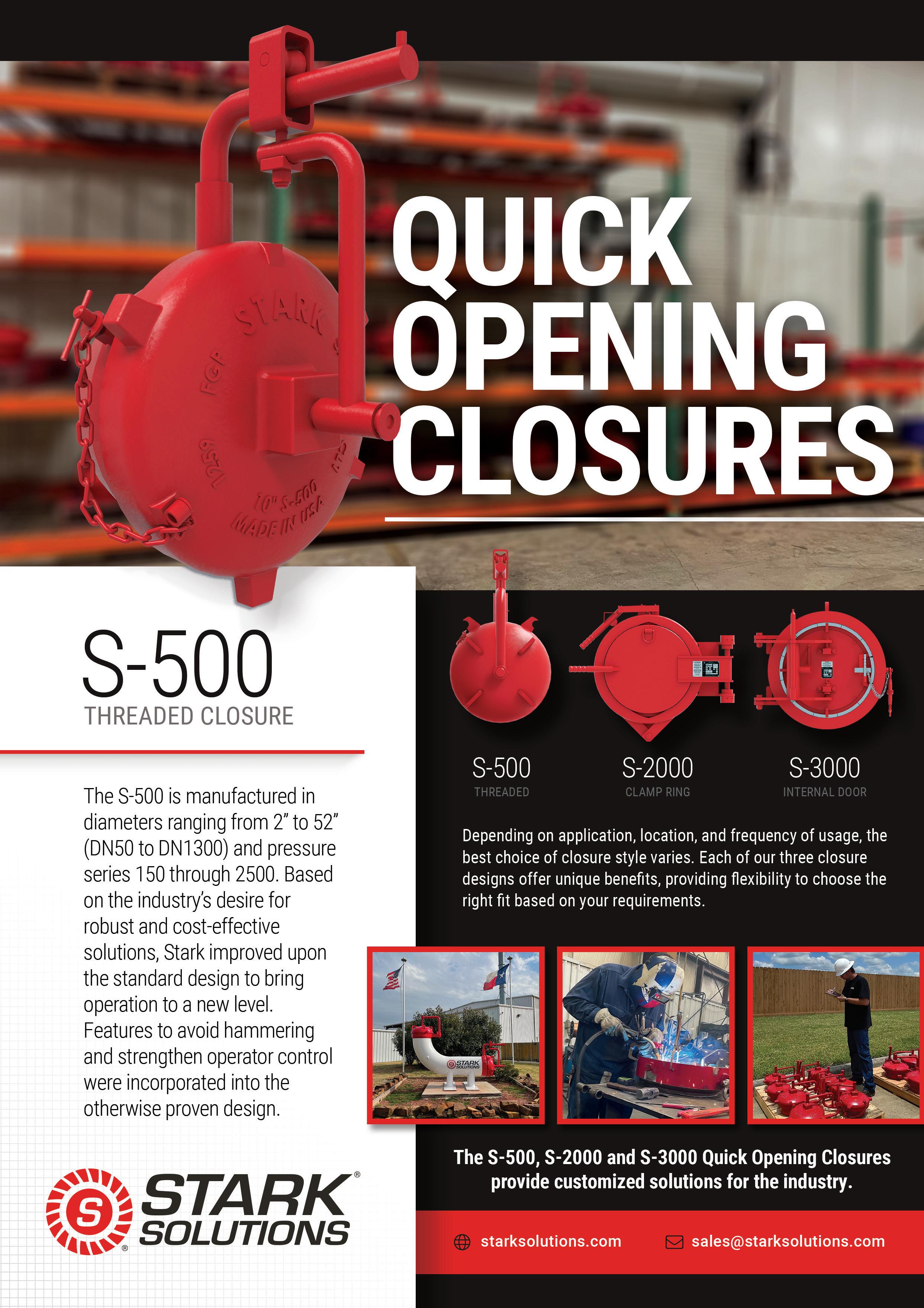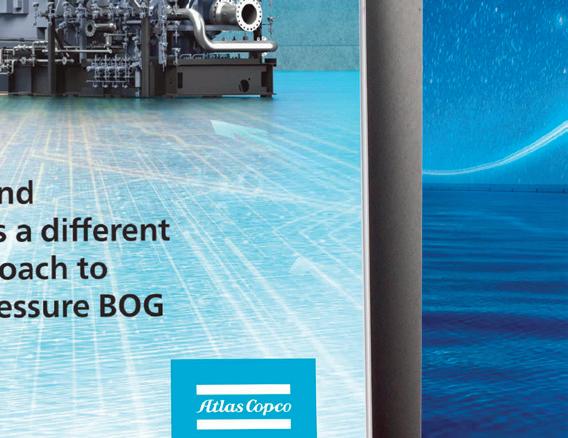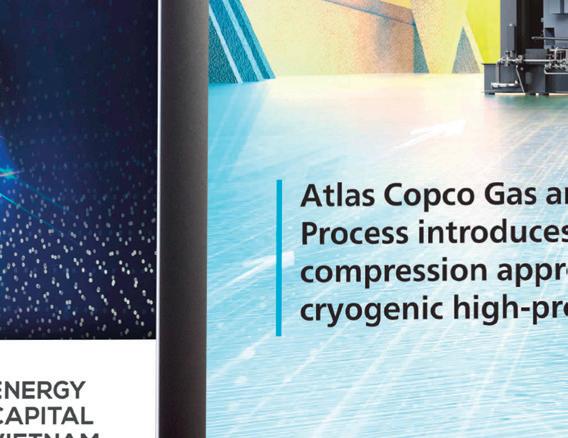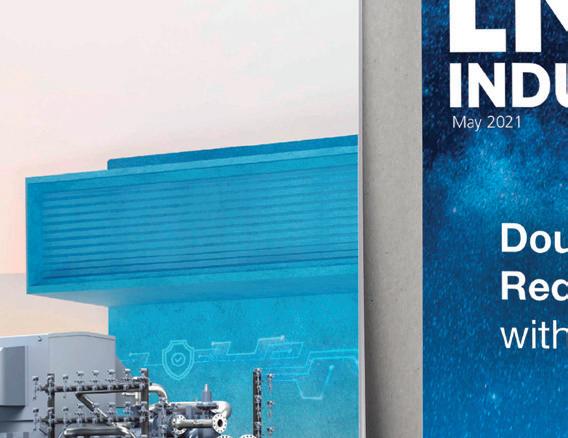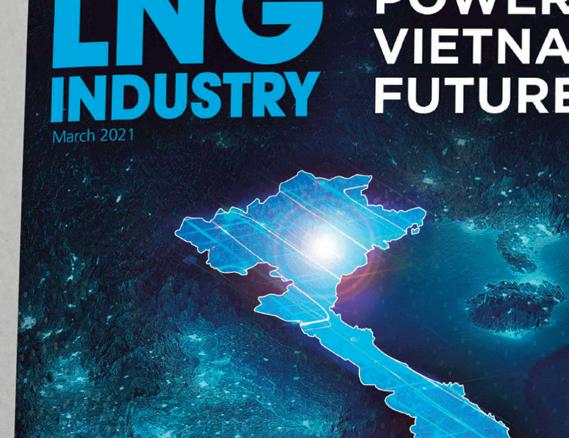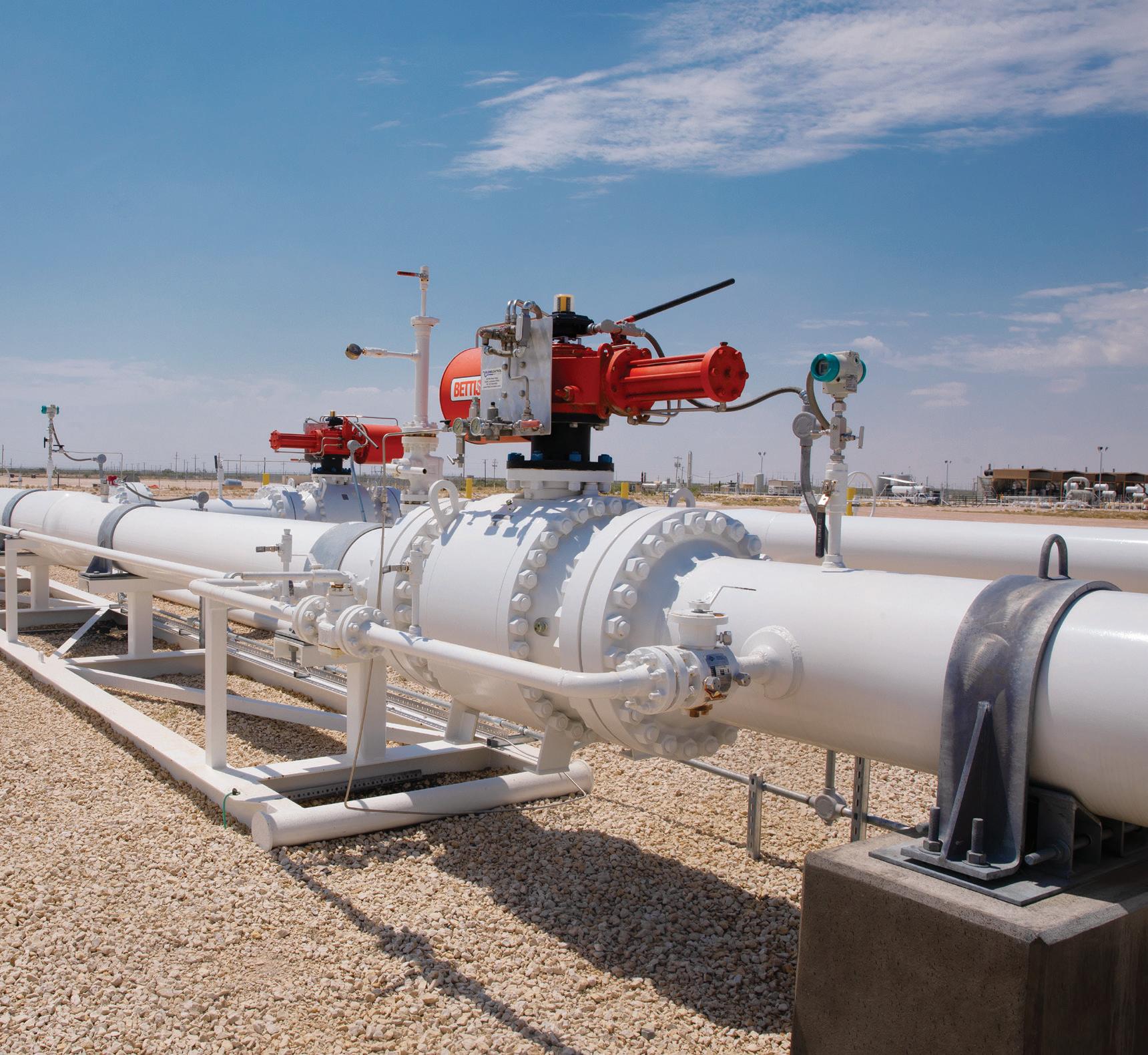EDITOR’S COMMENT
CONTACT INFORMATION
MANAGING EDITOR
James Little james.little@palladianpublications.com
EDITORIAL ASSISTANT
Sara Simper sara.simper@palladianpublications.com
SALES DIRECTOR
Rod Hardy rod.hardy@palladianpublications.com
SALES MANAGER
Chris Lethbridge chris.lethbridge@palladianpublications.com
SALES EXECUTIVE
Daniel Farr daniel.farr@palladianpublications.com
PRODUCTION MANAGER
Calli Fabian calli.fabian@palladianpublications.com
EVENTS MANAGER
Louise Cameron louise.cameron@palladianpublications.com
DIGITAL EVENTS COORDINATOR Stirling Viljoen stirling.viljoen@palladianpublications.com

DIGITAL CONTENT ASSISTANT Merili Jurivete merili.jurivete@palladianpublications.com
DIGITAL ADMINISTRATOR
Leah Jones leah.jones@palladianpublications.com
ADMINISTRATION MANAGER
Laura White laura.white@palladianpublications.com
Palladian Publications Ltd, 15 South Street, Farnham, Surrey, GU9 7QU, UK
Tel: +44 (0) 1252 718 999 Website: www.worldpipelines.com Email: enquiries@worldpipelines.com

Annual subscription £60 UK including postage/£75 overseas (postage airmail). Special two year discounted rate: £96 UK including postage/£120 overseas (postage airmail). Claims for non receipt of issues must be made within three months of publication of the issue or they will not be honoured without charge.
Applicable only to USA & Canada: World Pipelines (ISSN No: 1472-7390, USPS No: 020-988) is published monthly by Palladian Publications Ltd, GBR and distributed in the USA by Asendia USA, 17B S Middlesex Ave, Monroe NJ 08831. Periodicals postage paid New Brunswick, NJ and additional mailing offices. POSTMASTER: send address changes to World Pipelines, 701C Ashland Ave, Folcroft PA 19032
Writing as someone who fails to recall any password she has ever set, I’ve always been pleased with a website that autofills forms, uses facial recognition or gives a password hint (anything to jog my memory to remember that crucial combination of letters, numbers, capital letters and symbols). The concept of a password management system does appeal to me but I have never committed to using one. If you’re not familiar with them, password management systems comprise a web browser extension that stores all of your passwords in a sort of digital vault. You set a master password (there is still one to remember) and then bask in the security of strong encryption algorithms, local-only encryption, and multi-factor authentication.
But, in late December 2022, one of those password management systems was hacked and the consequences could be very serious. All 30 million LastPass users are at risk, as hackers now have a copy of each user’s entire password vault.
The December hack (thought to have been made possible by an earlier, unpublicised, security breach in August) stole billing and email addresses, end user names, telephone numbers, IP address information, and a host of customer vault data (unencrypted data such as website URLs, website usernames and passwords, secure notes, and form-filled data). One news report put it like this: “Hackers now have a copy of your entire password vault. Should they manage to crack your master password, they can take over your online life. That means full access to your emails, bank accounts, healthcare data, tax information, social media accounts – you name it.”1
LastPass claims that cracking those master passwords will be difficult and timeconsuming for the hackers, especially if the master passwords were created using the company’s recommended best practices (according to their website, a good example of a master password is pronounceable and memorable, but not easily guessed, like ‘Fidoate!my2woolsox’). LastPass customers have been advised to reset important passwords for online accounts such as banking, taxes, credit cards, retirement accounts and so on.
It’s every password or data-averse person’s nightmare: you take the leap and trust a system to consolidate your data safely and securely, and it fails.
On p.20 of this issue of World Pipelines, Cognite discusses how streamlining industrial data can empower decision making for oil and gas operations. In a discussion of freeing locked down data: Cognite encourages the “optimisation and contextualisation” of operational data, to ensure pipelines are being run at maximum efficiency and safety. The article makes a case for structuring an organisation’s data so that there aren’t too many disparate systems at work, which often compete for attention and deliver siloes of data that can’t be combined. Read the article to be convinced of how collecting and collating data in one place can provide a strong, secure basis for operational excellence and the rollout of future technologies.
1. www.kiplinger.com/personal-finance/lastpass-hack
SENIOR EDITOR Elizabeth Corner elizabeth.corner@palladianpublications.com
Pipeline Induction Heat (PIH) provide specialist field joint coating services at spool base locations, offshore pipe lay barges and onshore pipeline construction projects around the world, involving the use of stateof-the-art equipment and processes for the application of a wide range of field joint coating materials.



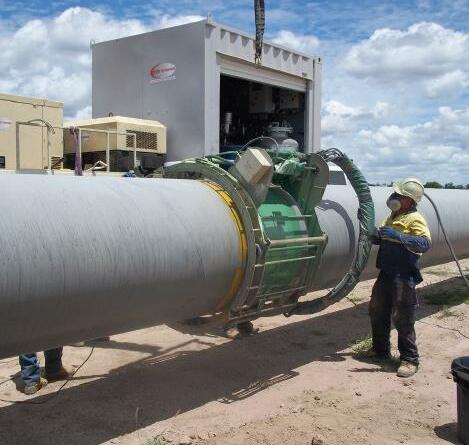




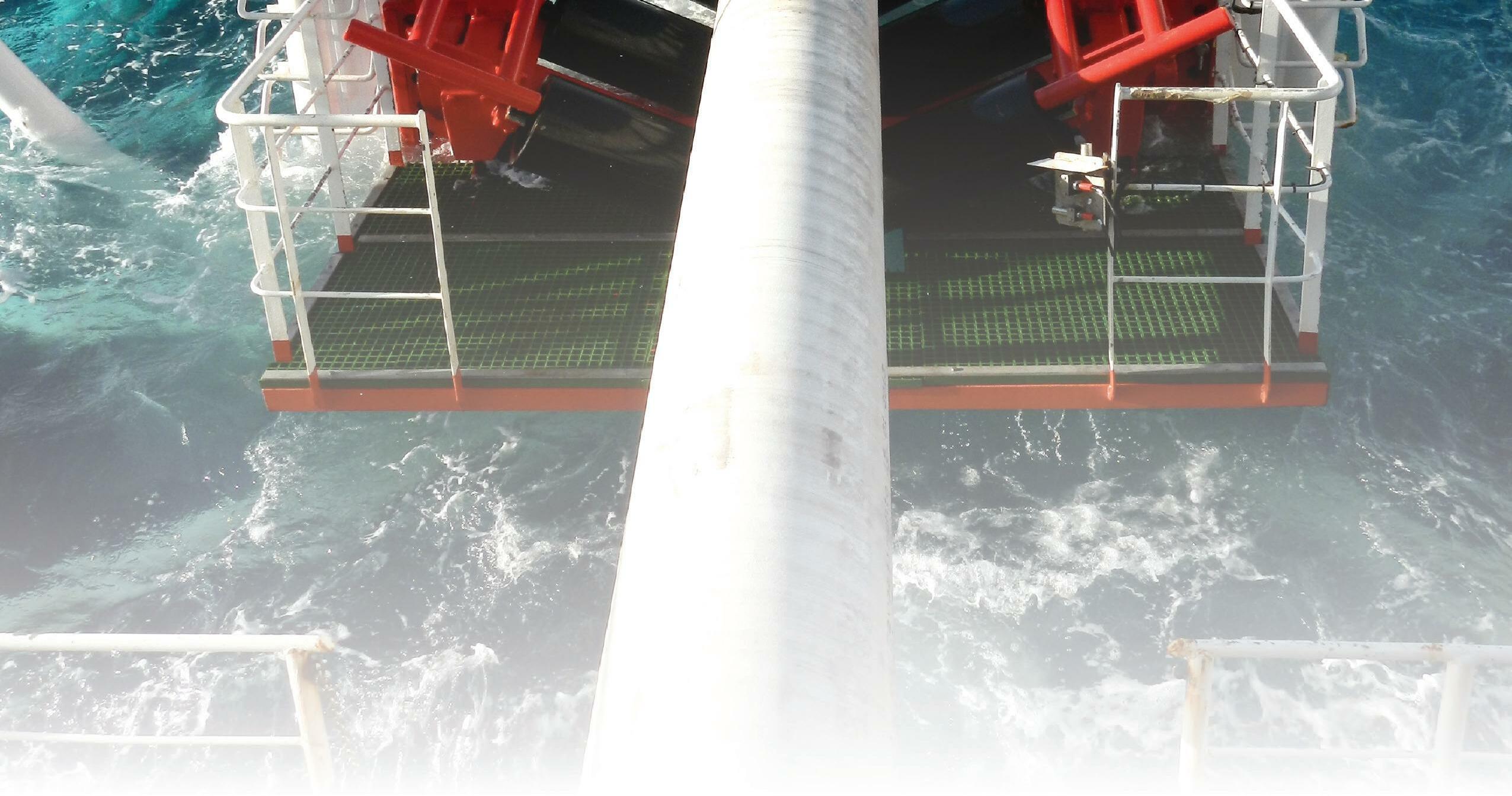

PIH also provide Custom Coating services for the application of the latest Thermal Insulation solutions (IMPP and IMPU) to bends and spools.













Field Joint Coating and Custom Coating Services
Dedication Innovation Integrity Offshore Onshore Spoolbase Custom Coating Pipeline Induction Heat Ltd, Burnley, UK Tel: +44 (0) 1282 415 323 Fax: +44 (0) 1282 415 326 E-mail: sales@pih.co.uk Web: www.pipelineinductionheat.com
DNV completes verification for Baltic Pipeline

Energinet, the Danish national transmission system operator for electricity and natural gas has received certificates of conformity (CoC) from DNV, the independent energy expert and assurance provider, for its section of the major offshore Baltic Pipe project. The CoCs were handed over at a ceremony in Energinet’s office in Ballerup, Denmark in December 2022. The £2 billion gas pipeline is a strategic infrastructure project with the goal of creating a new gas supply corridor for the European market.
With an annual capacity of 10 billion m3, the Baltic Pipe Project will allow gas transport from Norway to Denmark and Poland. DNV was contracted early in the project to deliver technical assurance services, and ultimately support the Authority with the permitting needed to take the new infrastructure into use. The contract scope included independent verification, complex independent modelling and submarine pipeline certification to the DNV certification regime DNV-SE-0475. Acceptance criteria comprised of the Danish Continental Shelf Law, the world recognised standard DNV-ST-F101, and the suite of underlying DNV standards and
recommended practices. Work took place during the engineering, procurement, construction, installation, hook-up, and commissioning phases of the project.
The Baltic Pipe achieved Final Investment Decision (FID) in 2018 and was partly funded by the EU. By providing Poland with a new energy supply, enabling the country to move away from coal fired powerplants and reduce its overall CO2 emissions, the project aligns with the objective of the subsequent REPowerEU plan. This scheme sets out a series of measures to fast forward the green transition while increasing the resilience of the EU-wide energy system, in order to accelerate the move away from Russian fossil fuels.
Energinet’s part of the large-scale project consists of 105 km pipeline in the North Sea, approximately 210 km pipeline underground across Denmark, an expansion of the receiving Nybro gas terminal, and a new compressor station at Everdrup in Southern Zealand. DNV also assisted with professional services to Energinet on the onshore pipelines, compressor station and gas terminal.
Scramble for Africa gas poses stranded asset risk, says Global Energy Monitor report
Planned investments across Africa totalling US$245 billion for gas pipelines, LNG terminals, and power plants represent an enormous stranded asset risk, as much of this gas is intended not for domestic consumption but rather to correct Europe’s short-term energy crisis resulting from Russia’s invasion of Ukraine, finds a new report from Global Energy Monitor.
Key points from the report are:
) Much of the continent’s gas pipeline buildout has yet to secure investment. The planned gas pipeline build up in Africa would require US$89 billion in investment. Only US$4 billion is attributed to projects under construction, while US$85 billion is attributed to proposed projects.
) While Africa has an estimated 23 932 km of gas pipelines in development, most projects remain in the proposal stage, with only 1872 km currently under construction. South Africa and Mozambique lead in proposed gas pipelines, with 4792 km and 4352 km, respectively.
Keystone pipeline: Kansas oil spill
Canada’s TC Energy Corp. says it has cleaned up almost 2600 bbls of oil from the largest US crude spill in nearly a decade. TC Energy shut the Keystone Pipeline after the spill of roughly 14 000 bbls of crude was discovered in a creek in Washington county, Kansas, on 7 December.
It is the third spill of several thousand barrels of crude from the Keystone line in the last five years. The 622 000 bpd Keystone line, which ships heavy Canadian crude from Alberta to US refiners in the Midwest and the Gulf Coast, had received special permits to run at a higher rate than any other crude lines in the US, and has been doing so since 2017.
The spill was the largest onshore oil spill since at least
Overall the Africa Gas Tracker identifies 65 GW of gas plants in development, 75 million tpy LNG terminal capacity in development and 22 600 km of gas pipelines in development.
Christine Juta, Project Manager for the Africa Gas Tracker, said, “Investments in gas pipelines and LNG export projects compete with Africa’s need to achieve universal access to clean energy and meet domestic demand for gas. Without long-term financing and off-take agreements, African countries risk banking on what could well be a short-lived appetite for gas.”
Julie Joly, Oil and Gas Programme Director, said, “The EU’s appetite for more LNG will be short-lived. By the time any terminal is built, export projects will be obsolete as the world moves on to renewable energy. At that point, new and existing pipelines in Africa would not be able to supply energy for use domestically without building even more infrastructure to distribute and burn the gas. The cost of that additional investment and the externalities associated with it, if compared to the cost of developing clean, cheap renewable energy, will be untenable, leaving the pipelines stranded as well.”
2013, and the largest spill in the Keystone pipeline system since it began operating in 2010.
About 22 oil spills have occurred on the Keystone pipeline in the past 12 years, with two other large incidents. TC Energy has paid US$300 000 in fines for previous spills on the Keystone pipeline.
TC Energy reports that 6973 bbls of oil had been recovered from the creek as of 17 December. “The affected segment of the Keystone Pipeline System remains safely isolated as investigation, recovery, repair and remediation continue to advance,” TC Energy said in a statement. “This segment will not be restarted until it is safe to do so and when we have regulatory approval from PHMSA.”
JANUARY 2023 / World Pipelines 5
WORLD NEWS
IN BRIEF
UK
Quanta EPC has secured two three-year framework extension agreements to provide continued engineering support for existing oil and gas clients in the North Sea. They include operations, maintenance, modifications, upgrades and all other engineering support for several offshore assets to help drive efficiency improvements and reduce carbon emissions.
CHAD AND CAMEROON
Savannah Energy has acquired ExxonMobil’s entire upstream and midstream asset portfolio in Chad and Cameroon. The sale was closed on 9 December to the tune of US$407 million.
ASIA PACIFIC
EnerMech has acquired Stork Australia and New Zealand for an undisclosed sum as part of its strategic plan to add scale to its global integrity management business and further its diversification into new markets.
UK Australian autonomous systems company Abyss Solutions, which delivers data-driven engineering assessments for critical infrastructure, has announced that it will establish its new European hub in Aberdeen, Scotland.
UAE Global software and engineering leader Emerson has joined a group of two dozen major multinational companies in signing a pledge to promote gender equality and increase leadership roles for women in the UAE. The ‘Pledge to Accelerate Women’s Leadership in the UAE Private Sector’ seeks to ensure equal pay and fair compensation practices, promote equitable recruitment and promotion, guarantee fairness in policies, and encourage transparency about progress.
Energy infrastructure company Jemena has announced it is partnering with engineering and construction firms Zinfra, Nacap, and Wasco to connect Australia’s first LNG import terminal at Port Kembla to the Eastern Gas Pipeline (EGP).
The appointment will see the partners build a 12 km underground pipeline which will transport up to 130 petajoules of gas annually from Squadron Energy’s Port Kembla Energy Terminal (PKET) to customers in NSW and Victoria via the EGP. Once commissioned the pipeline will be able to transport enough gas to meet more than 75% of NSW’s current gas needs.
Jemena’s Executive General Manager of Gas Markets, Antoon Boey said Jemena had partnered with the three companies in
recognition of their skill and acumen in delivering complex energy infrastructure projects.
“We’re proud to be working with highly regarded construction service providers like Zinfra, Nacap, and Wasco on a project which will help deliver more gas to Australia’s east coast gas market,” said Mr Boey.
“We will be leveraging the skills of our project partners in different ways, with Zinfra set to provide overarching project management and engineering services for the project; Nacap will construct the pipeline itself; and Wasco will deliver the Kembla Grange Metering Station, where this pipeline connects to the Eastern Gas Pipeline.”

Williams to acquire MountainWest natural gas transmission and storage business
Williams has reached an agreement to acquire MountainWest Pipelines Holding Company from Southwest Gas Holdings, Inc., in a transaction including US$1.07 billion of cash and US$0.43 billion of assumed debt, for an enterprise value of US$1.5 billion.
MountainWest comprises roughly 2000 miles of interstate natural gas pipeline systems primarily located across Utah, Wyoming and Colorado, totalling approximately 8 billion ft3/d of transmission capacity. MountainWest also holds 56 billion ft3 of total storage capacity, including the Clay Basin underground
Fluxys increases transmission capacity
Infrastructure operator Fluxys Belgium has given the go-ahead for the construction of a new pipeline between Desteldonk and Opwijk. This pipeline will initially increase security of supply for Belgium and neighbouring countries in the context of modified gas flows. It is also an important step in achieving Fluxys’ ambitions in terms of energy transition. It is the first strategic investment for hydrogen transport in Belgium. In short, this is a dual-purpose pipeline.
The new pipeline will run parallel to the existing natural gas pipeline between Desteldonk and Opwijk, a total length of 44 km. Work is scheduled to start in March
storage reservoir, providing valuable service to western markets. The acquisition price represents an approximate 8x estimated 2023 EBITDA multiple.
“Our natural gas focused strategy is anchored in having the right assets in the right places to serve our nation’s growing demand for clean, affordable, and abundant natural gas. MountainWest is complementary to our current footprint, providing us with infrastructure for natural gas deliveries across key demand markets, including into Salt Lake City,” said Alan Armstrong, Williams President and CEO.
2023 and be completed by the end of the year.
This expansion of Fluxys’ network capacity is vital in view of the changed structure of European gas supply. Doubling the pipeline will increase the offtake capacity from Zeebrugge by 15 GWh/h, equivalent to the energy generated by 15 nuclear reactors.
With this project, Fluxys is anticipating the growth in LNG regasification capacity at the Zeebrugge terminal to avoid creating a bottleneck further down the network. Boosting west-to-east transmission capacity is a key part of Europe’s plans.
WORLD NEWS
6 World Pipelines / JANUARY 2023
Jemena appoints construction partners for LNG import terminal
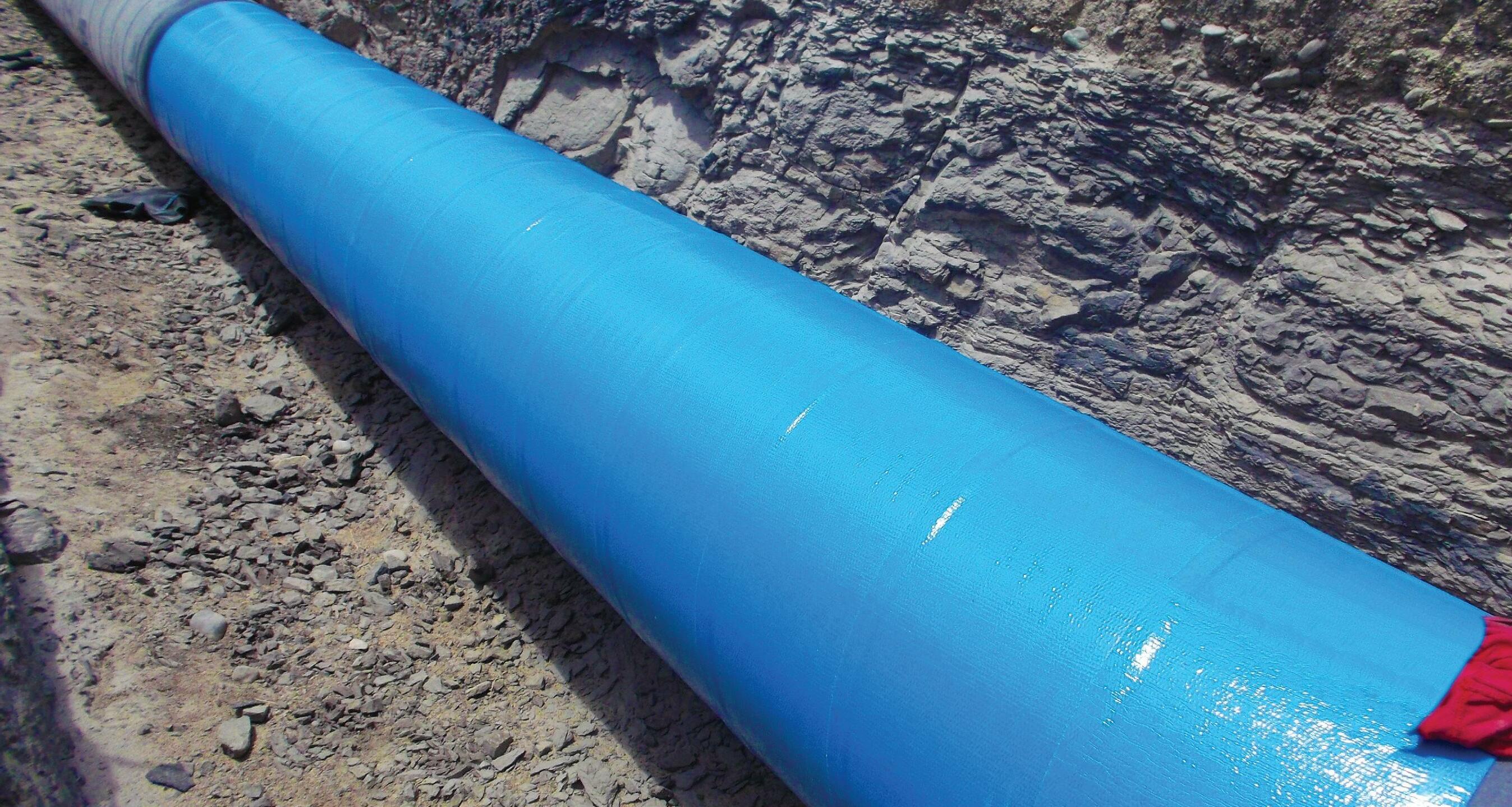

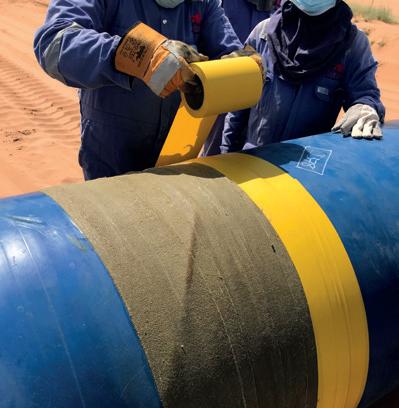



PROTECTIVE OUTERWRAPS SOIL-TO-AIR INTERFACE SYSTEMS BITUMEN & BUTYL TAPES PETROLATUM TAPE SYSTEMS PROTAL 7200™ SPRAY/ROLLER/BRUSH APPLIED LIQUID EPOXY COATING DENSO VISCOTAQ™ FOR CORROSION PREVENTION DENSO™ are leaders in corrosion prevention and sealing technology. With over 135 year’s service to industry, our mainline and field joint coating solutions offer reliable and cost effective protection for buried pipelines worldwide. United Kingdom, UAE & India USA & Canada Australia & New Zealand Republic of South Africa www.denso.net www.densona.com www.densoaustralia.com.au www.denso.co.za A MEMBER OF WINN & COALES INTERNATIONAL A range of viscoelastic tapes used for corrosion prevention on pipelines, field joints, fittings & valves. The unique, self-healing technology of Viscotaq offers asset owners outstanding, long-term protection against corrosion. > >
25 years gone in a FLASH!

Thanks for the continued support of our much-valued staff, clients and suppliers.

Propipe will continue to supply Pipeline Pigs, Pipeline Plugs and Trident Pig Tracking Equipment to the same high standards that we have maintained since 1998.

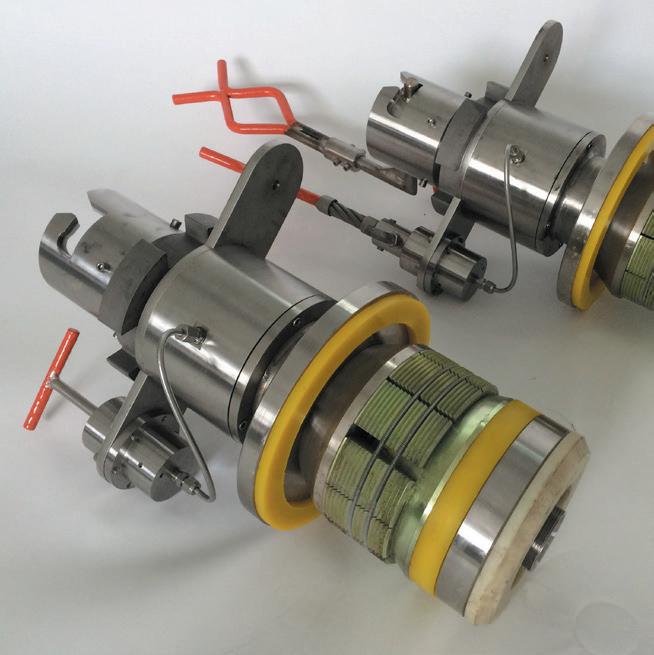



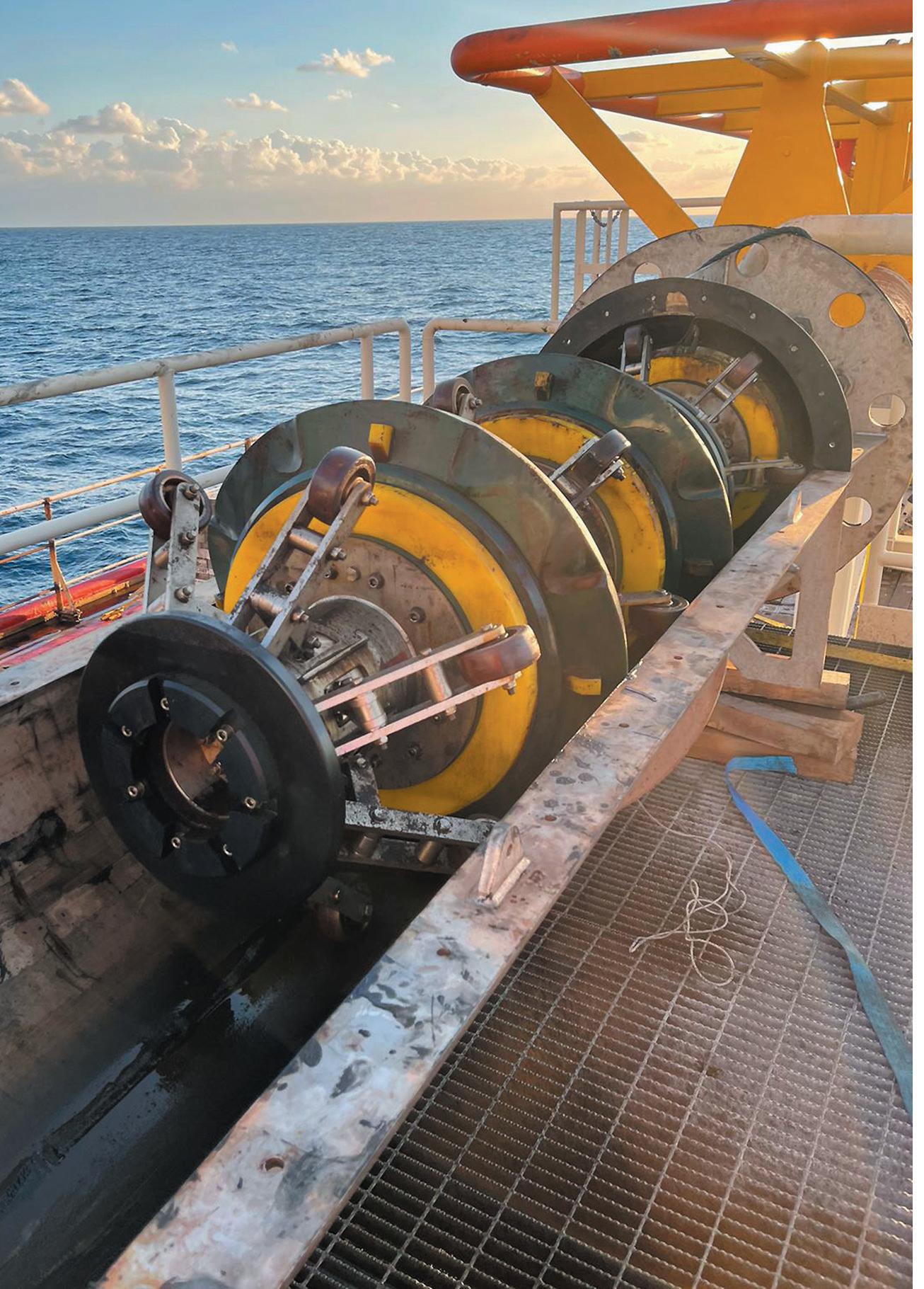
www.piggingsmarter.com
The government’s net-zero strategy ‘Build Back Greener’, unveiled in autumn 2021 by the then Prime Minister, Boris Johnson, set out a detailed blueprint for the UK’s march towards net-zero by 2050.
Long before its publication, however, the gas industry, realising its critical role in reducing carbon emissions, had already set out on a journey to demonstrate that the safe and effective use of hydrogen could hold the key to reducing the nation’s reliance on natural gas.
The HyDeploy project – a collaboration between Northern Gas Networks, Cadent, Progressive Energy, ITM Power, the Health and Safety Executive (HSE) Science Division, and Keele University – set out to make the case for introducing hydrogen into the UK’s gas supply and cutting the amount of fossil fuel used in our homes and businesses without causing any disruption.
HyDeploy was launched at a time when the transport sector was beginning to take major strides towards reducing its carbon footprint. Electric vehicle (EV) technology was grabbing much of the net-zero spotlight as EV manufacturing was on the rise. This was coupled with an emergence of new battery technologies and the roll-out of a rapidly expanding EV charging network.
Heating homes and decarbonising industry, despite accounting for nearly half of all energy use in the UK and around a quarter of the country’s carbon emissions, had until recently proved an altogether tougher nut to crack.

Chicken and egg
That’s partly because, although the use of hydrogen isn’t novel, the sector has traditionally been hampered by the ‘chicken and egg’ conundrum, based on supply and demand.
Members of Hydrogen UK, the UK’s largest trade body for hydrogen, outline a partnership with enormous environmental benefits – the HyDeploy project.
15
Figure 1. The village of Winlaton, near Gateshead, UK.
That is to say that to make 100% hydrogen gas networks a success requires appliances to be able to operate on pure hydrogen. It also requires the production of large amounts of hydrogen and, without these two elements, the market simply doesn’t work.
Even if there was a high demand for hydrogen appliances, no commercial manufacturer is ever likely to go into the production of a new generation of hydrogen boilers without knowing the fuel is available to operate them. Similarly, there would be no appetite for investment in large-scale hydrogen production without assurances that homes and businesses would be able to use the end product.
It was on the horns of this dilemma that HyDeploy was born. At its most basic, HyDeploy asks the question: how much hydrogen can be introduced into the existing worldclass UK gas distribution network without causing disruption to the network, customers, and their appliances? Its answer is an initiative designed to blend hydrogen and natural gas in such a way as to reduce carbon emissions without having to change any consumer equipment or disrupt the work of thousands of gas engineers.
The enormous potential of HyDeploy was clear from the outset. If a way could be found to prove that introducing a 20% hydrogen blend into the existing gas distribution network could be safe, effective and non-disruptive, there was an opportunity to deliver relatively quick and costeffective carbon savings for the UK, equivalent to taking 2.5 million cars off the road and simultaneously socialising hydrogen use with the public – effectively kick starting the UK hydrogen economy.
Proving the case for safety
Quite rightly, the gas industry prides itself on its tight regulation and relentless focus on safety. What this means for the development of new technologies and practices is that even getting to the point of proving concept for a new initiative poses a significant challenge.
UK gas networks are governed by the Gas Safety Management Regulations (GSMR), which currently prohibit the presence of more than 0.1 Mol% hydrogen within the gas that is being distributed. HyDeploy was set to challenge this restriction and determine what is the safe and practical limit for hydrogen within the existing system.
The first hurdle for HyDeploy to overcome was finding a way to test the hypothesis of an 80/20 natural gas and hydrogen blend in near real-world surroundings without falling foul of the GSMR. This meant working closely with the HSE to develop a quantitative risk assessment (QRA), supported by a body of evidence, along with a robust safety case that would satisfy safety requirements and enable the HSE to sanction an exemption against the hydrogen restrictions within the GSMR. This would, therefore, mean that hydrogen could be blended into a gas network (above the current 0.1 Mol% limit) to demonstrate its capabilities.
Indeed, much of the early work on the programme involved identifying the different elements within a QRA. This required assessment to understand their performance in a hydrogen blend environment, such as domestic and commercial appliances, the materials used in the network, the characteristics of the gas to understand how it will behave in different scenarios, the effectiveness of gas detection systems, network operational and emergency procedures and, of course, public perception around the use of hydrogen instead of natural gas. Significant laboratory and site-based tests were carried out on a range of gas appliances, and extensive research was done into the effects of hydrogen on the different materials found on the trial network. All of this evidence was used to conduct the risk assessment.
University challenge
The history-making ‘phase 1’ of HyDeploy began in earnest in October 2019, when blended hydrogen was injected into part of the private gas network at Keele University campus in Staffordshire. This was the first time that a UK gas distribution network had transported a gas with greater than 0.1 Mol% hydrogen since town gas operations in the early 1970s.

During an 18-month trial, 100 homes and 30 university buildings received the blended gas. The hydrogen production and blending units, along with other supporting equipment installed at Keele, were the first of their kind. Their performance was monitored closely and carefully evaluated. The trial network was used to host further testing with the installation of a boiler research facility.
This facility housed four pairs of boilers, with one boiler in each pair operating on natural gas and the other on blended hydrogen.
16 World Pipelines / JANUARY 2023
Figure 2. Aerial view of hydrogen blending facilities at Northern Gas Networks’ Low Thornley site.
DUTY
to safeguard my family, my community and the environment by keeping product in the pipe.
It is who I am. I am a pipeliner.


We are pipeliners too.
The world relies on pipelines as energy lifelines that fuel everyday life. The right pigging solutions are vital to the maintenance, operation and integrity of those lifelines. Our engineers have the expertise to make the right recommendations for your product and your goals. It is our duty to partner with you by making pipeline access safer, increasing product transportation efficiency and enabling more accurate inspection data results.
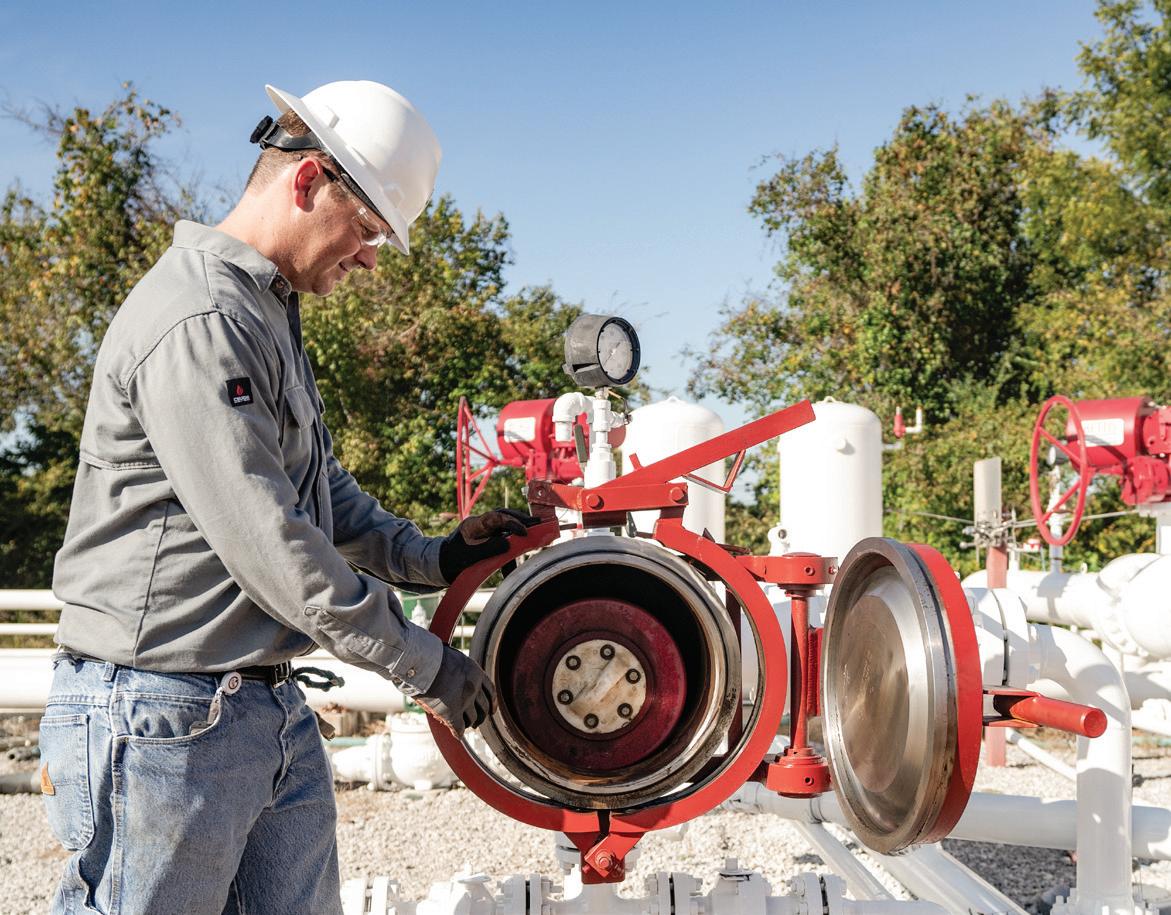
The world counts on you. You can count on us.
For the life of your pipeline.
Shop online for pigs, closures, parts and accessories. Scan the code and register to get started.




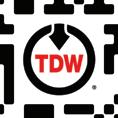




tdwilliamson.com
Williamson
©2022 T.D.
IT IS MY
The boilers ran through an accelerated testing regime and consumed the equivalent quantity of gas that would be expected to be consumed in 12 normal years of operation. Therefore, the test conditions provided a robust basis of assessment to determine any potential long-term implications of using the blended mix.
The boilers were extensively instrumented by the manufacturers and returned to the manufacturers at the end of the trial for assessment. The manufacturers are unable to tell which boiler was operating on which gas.
In the same facility, two gas hobs were also set up to demonstrate to visitors the comparison between blended and natural gas operation. Again, there was found to be no perceivable difference between the two.
Overall, the results of the Keele trial were extremely positive and confirmed that blended hydrogen of up to 20% by volume does not interact negatively with existing materials used within infrastructure like network pipes, or in homes or businesses such as boilers, hobs, cookers, or meters.
Real-world testing
The success of HyDeploy at Keele paved the way for ‘phase 2’, a larger trial in Winlaton, near Gateshead. Running from August 2021 to June 2022, the trial supplied 668 houses, a school and a church with a 20% hydrogen blend. This was the first public gas network to receive hydrogen blended gas. In a process mirroring that of phase one, the project team was required to develop and evidence a comprehensive safety case that would satisfy the HSE before any work on the ground could begin.
Other than the larger size of network, one of the major differences between Keele University and Winlaton was the presence of a wider breadth and age of network materials, notably cast-iron pipe. The project conducted extensive materials science research and explored fundamental fracture mechanics to demonstrate that the metallic pipelines would not suffer from embrittlement and nor would there be an increase in leakage.
The team also embarked on one of the most important elements of the hydrogen journey: a comprehensive customer engagement exercise across the proposed test site area. This element of the trial was mission-critical because it needed to access as many properties as possible to audit and gas safety check the household appliances due to use the blended gas.
During the engagement exercise, surveyors successfully managed to access 90% of the trial area, building up a complete picture of gas use, and informing members of the public about the proposed change to their supply. In addition, they ran a targeted gas safety campaign designed to educate customers in how to respond to gas emergencies. This work helped to provide the HSE with adequate assurance that public safety would not be compromised.
Like phase 1 at Keele, the Winlaton demonstration was a resounding success. Appliances continued to operate as normal, without any changes needed to boilers, cookers, fires,
or meters, which are all designed to operate with a blend of up to 23% hydrogen.
Shaping government policy
The final phase of HyDeploy entails continued close work with partners across the sector to build up a robust and compelling evidence base to support wider deployment of blended hydrogen throughout the UK gas network. It is focusing on evidence generation relevant for all pressure tiers of the gas network, including hydrogen blend operations at local transmission levels (circa 50 - 70 bar), and industrial and commercial users.
To that end, HyDeploy is working with industry to complete the safety evidence needed to further inform government decision-making by successfully demonstrating blending up to 20% volume of hydrogen with natural gas into four live industrial environments, including the production of sheets of ‘float’ glass at Pilkington Glass, consumer products such as Persil and TRESemmé at Unilever, food products baked using heat from blended hydrogen gas at Campden BRI, and a demonstration of a combined heat and power unit.
Teams are also working with Lucideon – an independent, international materials technology company that focuses on innovation, sustainability, and quality assurance of materials –on testing how HyDeploy can be utilised within the ceramics industry.
The findings from the HyDeploy project were due to be submitted to the government late 2022, and the overall findings from the final phase will also be submitted, ahead of a decision around the wider blending of hydrogen in the UK gas network, which is due to be taken in 2023.
Looking ahead, the benefit of operating blended hydrogen networks is that they allow the carbon abatement of the UK gas distribution industry now without disruption, and this then sets the platform for a transition to 100% hydrogen networks. In this space, several projects are currently running, testing the use of hydrogen for heat, including the Hydrogen Homes at Low Thornley near Gateshead where 100% hydrogen can be seen in use in a show home boiler, cooker, hob, fire and even a barbecue.
The government’s Ten Point Plan sets out an ambition to determine the true value of hydrogen for heating across three demonstrations: a ‘hydrogen neighbourhood’, a ‘hydrogen village’ and a ‘hydrogen town’.
SGN’s H100 Fife project will deliver hydrogen to 300 homes and become the ‘hydrogen neighbourhood’. Earlier this year, Ofgem shortlisted two UK locations for a hydrogen village demonstration, which will see natural gas replaced with hydrogen in around 2000 properties. The hydrogen village programme will commence in 2025 and is expected to last around two years. The shortlisted locations are an area of Redcar in Teesside in the North East and Whitby, Ellesmere Port, in the North West.
All of these programmes are showing excellent promise in delivering effective climate change solutions and will help to develop opportunities for low-carbon hydrogen as a new homegrown super-fuel which will be vital for our future energy security.
18 World Pipelines / JANUARY 2023

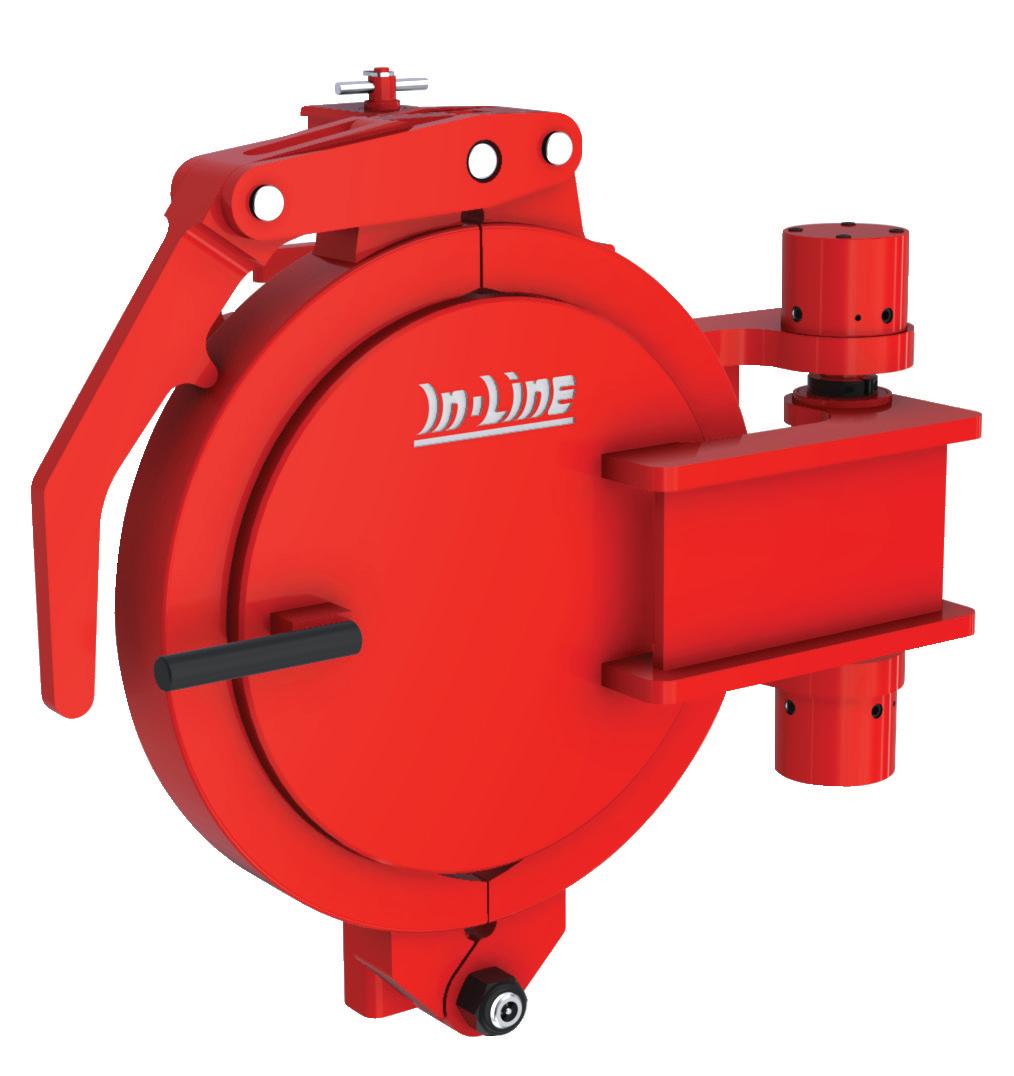
The In-Line Figure 800 Quick Actuating Closure puts safety first. Our patented Clamp Ring Retainer works in conjunction with the Toggle Actuator and the Pressure Alert Fitting to provide an extra level of safety, locking the Clamp Rings in position while the Closure is in the closed position. To ensure lasting value, the Closure incorporates industry-standard O-rings that do not require special order. Go with the In-Line advantage. Safety first. Value that lasts. Safety. Ease of Operation. Lower Operating Costs. 9426-39 Ave, Edmonton, AB, Canada T6E 5T9 1-866-416-9003 info@in-line.ca www.in-line.ca
usinesses of all sizes are starting to look for ways to maximise the value of their data and to use the resulting insights to improve decision making, accelerate innovation, enhance the customer experience and drive operational efficiency to create a competitive advantage. However, it’s often easier said than done.
Siloed data, outdated tools and shadow IT are the most common barriers faced by industrial businesses. These are the hurdles that companies need to jump if they aim to democratise data and analytics, streamline collaboration and accelerate time-to-insight. The global skills shortage represents a further barrier and it’s clearly one that must be surmounted if companies are to gain access to the right talent pool to tap into that data. According to a DNV study, 91% of energy
companies say digital skills training is needed in the oil and gas industry.
The energy sector is also burdened with an aging workforce, with 43% of its workers over age 50, according to the UK’s Department for Business & Energy Strategy. That makes the optimisation and contextualisation of data essential to ensure maintenance and operations teams have access to insights that might otherwise be lost as a key segment of the workforce enters retirement. This is yet another reason why driving business continuity and operational resilience through the power of industrial data is crucial.

Freeing locked down data
When looking at process-heavy industries, focusing on core operational technologies is
Breaking down data siloes can help empower decision making, accelerate innovation and build a competitive advantage, explains Geir Engdahl, Co-Founder and Chief Technology Officer, Cognite, Norway.
20
Figure 1. The latest generation of analytical tools can help enhance operational resilience.
key. Systems from multiple vendors, each paired with proprietary protocols, can lock down data, and these systems have an average lifespan of around 20 years. The impact of this mix of legacy kit, disparate control systems, noncompatible data models and communication interfaces can limit a company’s ability to collect and contextualise its data.
Cognite experienced this challenge firsthand when it supported an oil and gas company that had 30 oil platforms with more than 300 wells. The operator lacked a unified overview of maintenance activities across its assets – a costly and ineffective way of working. As the data team coming in to fix this issue, the Cognite focus was on ensuring that the business didn’t have too many disparate control systems using proprietary data models and communication. By
bringing these systems together onto a shared platform, this oil and gas operator could start to optimise scheduling, improve communication across organisational silos and make data-driven decisions.

Focussing on user needs
The secret recipe for many successful companies is to maintain a sharp focus on their users and on improving their operational efficiency, combined with an ability to make rapid and higher confidence decisions. Data plays a role here, and the work to structure an organisation’s data can bring value to multiple users. The key is understanding how people interact with data throughout the operation and be aware of how the data needs to be presented to the various roles in the company. By maintaining a user-
21
centric focus and having a solid foundation of scalable data, companies can accelerate time to value.
Across industrial operations, there is also a major focus on data analytics to support optimised decision-making and to enhance operational efficiencies. In the future, this could lead to the adoption of artificial intelligence (AI) and machine learning to intercede in the operation of industrial facilities in complex use cases, such as where distributed energy resources (localised energy generation) is deployed.
Environmental impact is also something increasingly important for users. One example of this is from another Cognite customer, Aker BP. This oil and gas company used machine learning smart monitoring systems to visualise all data relevant for troubleshooting water contamination, and identify factors related to high oil-in-water concentrations. This helped the company cut the time it spent on mitigating actions, which resulted in an annual savings of around US$6 million. So, concentrating on user needs not only helps to unlock the power of data, it also helps to drive operational resilience.
Using trusted data sources
Industrial data empowers everyone who engages with it, but the analytics and applications that leverage this data will come from the end users, software providers and equipment
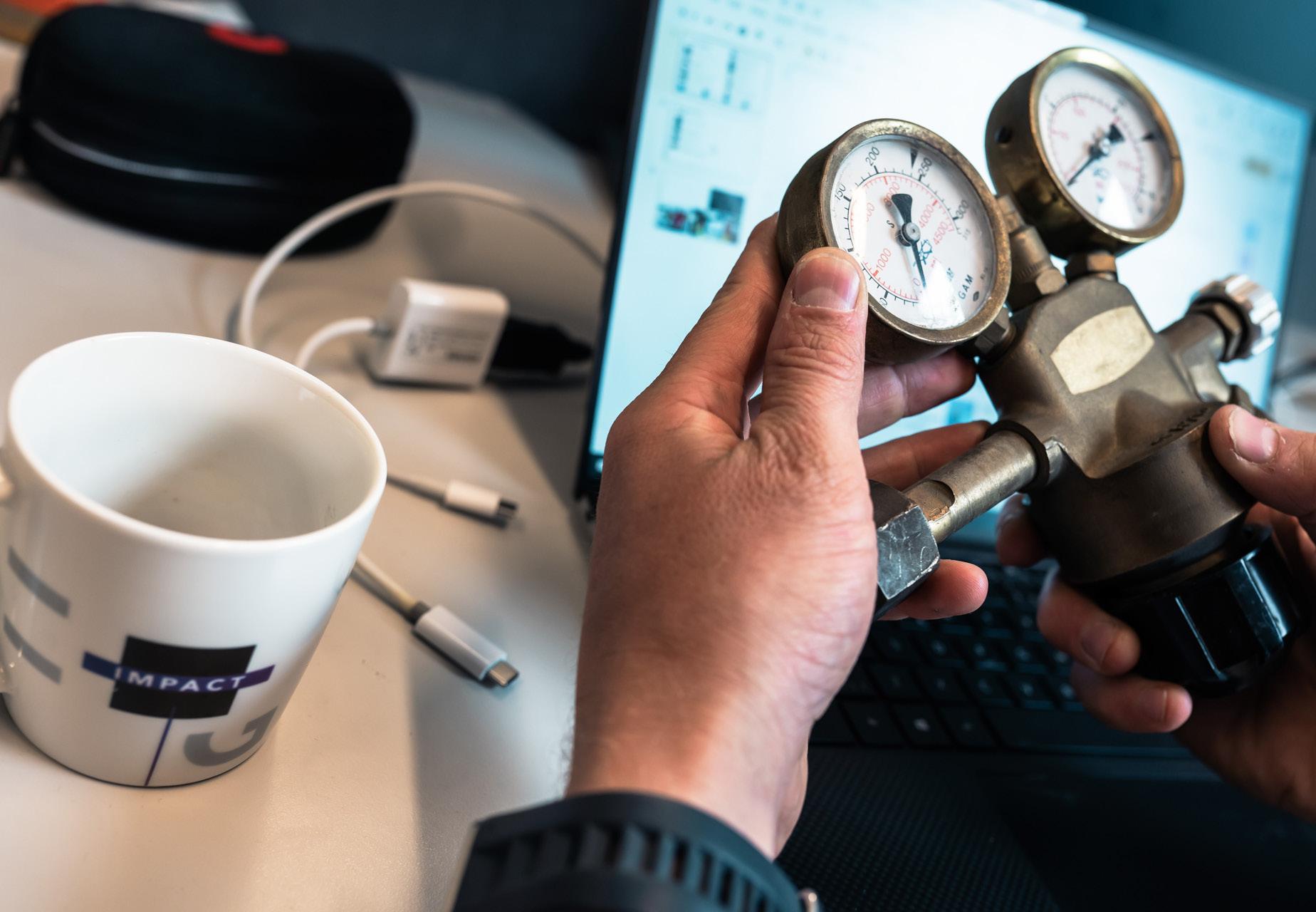
manufacturers. When you have a trusted data source with common assets, you have a strong basis for using low code to develop in-house applications, as well as AI to enhance decision accuracy. Given the current industrial landscape, as well as greater market requirements, such as data-intensive carbon reporting and business model disruption from digital technology adoption, companies that do not focus on data as a key asset will face a significant competitive disadvantage.
Fortunately, most companies realise that if they were starting operations today, given the tech we currently have available, their processes and teams would look very different relative to today’s teams and processes built around legacy technology. The businesses that can adjust their people and processes will have a first-mover advantage in this new datadriven era. Those that remain committed to past investments will eventually have to navigate twice the technology debt.
The current focus is on the power of analysis to help optimise decision-making and enhance overall operational efficiencies. However, that will change with the rollout of technologies such as AI and machine learning, which will be able to use enhanced data analysis to operate complex operations across industrial facilities. Releasing the power of data will be key to ensuring heavy industries can preserve business continuity, drive operational resilience and grasp all the benefits offered by emerging technologies.
22 World Pipelines / JANUARY 2023
Figure 2. Data insights can streamline maintenance activities.
The movement of natural gas from gathering systems and underground storage sites through transportation networks and to local distribution centres is driven by a series of complex, highly interdependent, and decidedly regulated processes. This includes all commercial activities, from nominations and scheduling to invoicing and balancing, which must be reconciled with physical flows as part of the gas pipeline transportation business cycle.
In recent decades, the rise of natural gas as a cleaner alternative to burning coal has been driving innovation of commercial gas structures. With the expanding presence of newer products including hydrogen, more pressure is being put on an increasingly diverse and tightly structured midstream energy segment working to optimise new pipe capacity, storage, shipping best practices and operational capabilities.
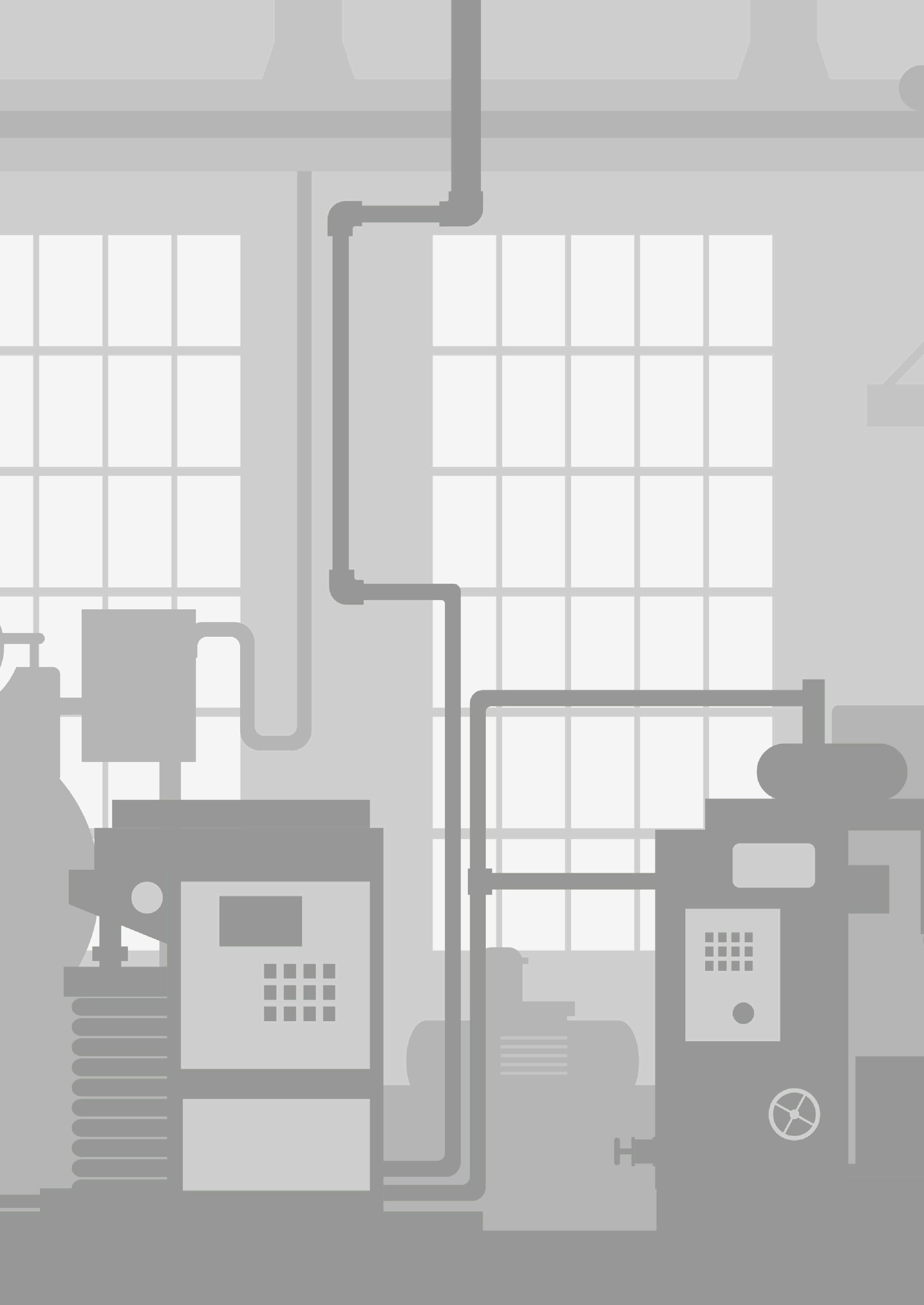
Transmission and distribution companies in greater numbers have been taking advantage of opportunities on the world stage. Safety, reliability, gas network security, and public image have each been identified as major, overarching themes for shippers and their counterparts thinking about expansions or new plays in up-and-coming regions.
On the business end of the commercial gas and transportation cycle, we often see shippers, transportation companies and local distribution companies (LDCs) searching for better insight
into future supply and demand, and overall gas transportation network performance. The desire is to optimise the planning and execution of gas deals, including accurate accounting and reliable records of gas received, purchased, transported, delivered, or sold.
All must consider both short and longer-term implications associated with critical technology requirements – for operational viability, network security and commercial longevity – in tandem with how hydrogen and carbon capture, utilisation and storage (CCUS) initiatives, emission-minimisation objectives, and renewable energy products may impact future operations.
Opening up
The global energy industry has undergone tremendous changes in the past two decades. Persistent growth in the natural gas market and other on-ramps to the decarbonisation pathway are being developed with future implications for energy purveyors on an international scale.
Open access regulations facilitate price transparency in markets for the wholesale of physical natural gas. From the US and Mexico to Brazil, Ghana, Malaysia and other parts of the world, the presentation of new gas pipeline transportation systems standards and regulations – including those influenced by international open access transmission system practices – have
23
Martha Rendon, Senior Product Manager of Gas Management Software, Emerson, USA, discusses optimising processes in commercial gas and transportation cycles.
helped level the playing field and create a progressively diverse and competitive scene.
Mexico, as one example, in 2013 amended its constitution to allow private investment in both the electric and petroleum sectors. A series of enacted laws would follow, intended to attract domestic and foreign investment into the energy sector and harness substantially underdeveloped resource potential. Since taking effect, the new rules have promoted several new companies in the midstream market, and empowered users to take control of their own supply as the country advertised an aggressive programme for natural gas transmission infrastructure.
With commercialisation activities open to private companies and a new set of modern institutions aimed at facilitating competition, Mexico went on to witness a profound and rapid opening of its oil, gas, and electricity sectors.
Managing risk
Cybersecurity has been identified as one of the leading priorities and a national security issue for governments in places such as the US, where, following a 2021 ransomware attack on a major pipeline, authorities issued several security directives mandating that owners and operators of certain critical pipelines implement several urgently needed cybersecurity measures.
One directive includes guidance to implement specific mitigation measures to protect against ransomware attacks and other known threats to IT and OT systems, develop and implement a cybersecurity contingency and recovery plan, and conduct a cybersecurity architecture design review.

The US Transportation Security Administration recently released a revised and reissued cybersecurity requirement notification for pipeline owners and operators, advising them to develop network segmentation policies and controls that ensure both the continuance of OT systems and the ability to operate safely in the event of an IT system compromise.
Oil and gas majors have a tremendous stake in mitigating operational risks, including cyberthreats, that could jeopardise the reliable functioning of critical infrastructure. The management of change and configuration initiatives that centre on an organisation’s OT and IT assets, including both hardware and software, have been pegged commensurate with the risk to critical infrastructure and organisational objectives.
Commercial shippers and pipeline transportation companies must act diligently when aligning technological solutions with their risk management, business administration, and operational needs against the backdrop of these energy paradigms. Realistically, technology seekers in this space are trying to find reliable, advanced solutions including vulnerability and consequence assessments that allow for simultaneous management of safety programmes, contractual obligations, and regulatory concerns.
A system-based approach affords the necessary flexibility and agility to respond to an ever-changing gas system and pipeline asset management environment. To meet all commercial structure requirements, the integration of leak detection tools, predictive modelling systems and flow condition validators with software that allows for capacity and nomination validations, as well as ‘look-ahead’ results, are more commonly being placed under a single umbrella.
Ideally, the implementation of an integrated commercial gas business solution would support all commercial activities in the transportation process, including nomination management, confirmation, scheduling, allocation, balancing calculations, and invoicing – subject to general terms, conditions, and other contractual obligations associated with pre and post-flow tasks.
Logistics end Pipelines have multiple restrictions on the logistics of natural gas flows in their systems, requiring strict adherence to avoid scheduling issues and balancing penalties. To move and transport natural gas from one point to another, a variety of coordinated activities must be undertaken.
A transformational approach employs a suite of integrated software tools to better inform and facilitate accurate forecasts and improve customer service, while aligning with pipeline modelling, simulation, and operational management solutions. The appropriate configuration of automated technologies can eliminate manual, time-consuming processes while optimising the logistics for improved results. These outcomes result in an acceleration, in terms of maturity in customer expectation levels, and provide an exceptionally reliable path forward by increasing efficiencies.
The management of nominations is #1 for gas pipeline transportation companies, and the first activity in the business cycle. Emerson developed PipelineTransporterTM as a logistics and commercial management system for pipelines and LDCs. The PipelineTransporter software, used widely as a transactional management tool to administer natural gas transportation contracts, enhances the ability of pipeline operators to manage third-party access to gas throughout the gas business cycle.
With the ability to handle nominations, generate schedules, balance accounts, and create invoices, PipelineTransporter was also built to integrate seamlessly with Emerson’s PipelineManagerTM, an advanced online pipeline simulation engine for pipeline
24 World Pipelines / JANUARY 2023
Figure 1. Integration of all commercial gas business activities allows companies to cohesively manage the complex, multi-stage process while mitigating risk.





Substantiate and validate material properties of your pipeline the right way. Greater Accuracy. Less Digs. Reduced Costs. Contact Us +1 (617) 502-5636 sales@bymmt.com www.bymmt.com MATTERS
operations, management, and leak and theft protection. It is based on real-time simulation of the flow in the pipeline with a rigorous transient computer model driven by real-time data retrieved from the pipeline. PipelineTransporter additionally integrates with PipelineStudioTM, a state-of-the-art hydraulic simulation tool by Emerson that quickly and accurately performs steady state and transient analysis of single-phase fluid flow in pipeline networks.
TransactionManagerTM, another advanced Emerson software tool, is a gas transactional management solution for shippers and pipeline operators in regulated or merchant markets worldwide.
Depending on market requirements and regulations, PipelineTransporter or TransactionManager is used to manage the transport, sales, and purchase contracts, at the same time providing better transaction visibility via an off-the-shelf software solution. Both software tools have been designed to manage the commercial business aspects of the pipeline, providing the ability to operate safely and effectively with maximum business acumen and capacity for gas delivery to customers, satisfying demands.
The commercial solutions cover all integration points, including online or offline hydraulic validations and authorisations in the scheduling process by integrating with PipelineManager (simulation in real-time) and PipelineStudio (simulation offline) to ensure optimal capacity is being used and no operational violations are happening. Certifications and allocations are tied to SCADA or an alternative gas measurement system, and with reliable source data, invoices can be generated and transferred to the transporter’s or LDC’s accounting system.
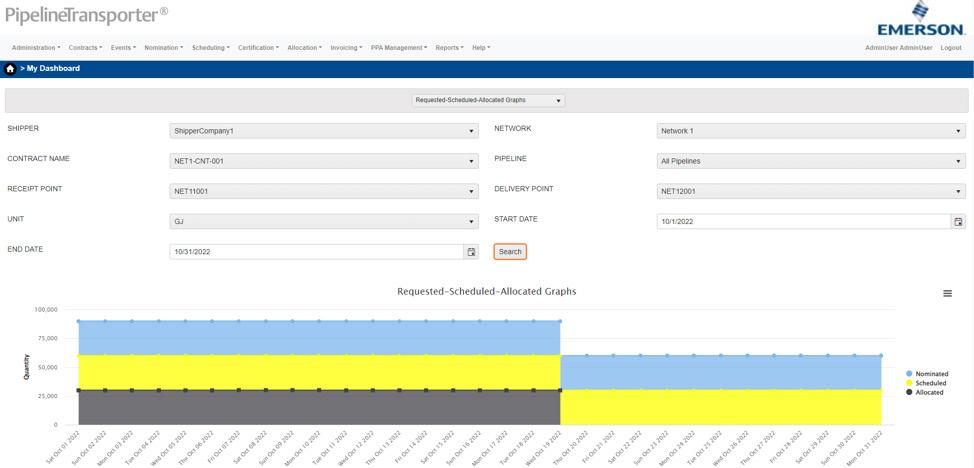
Overall, PipelineTransporter or TransactionManager, solutions delivered on-premises or in the cloud, increases visibility by incorporating a powerful lens through which datasets, business transactions, balancing rules, tariff structures, informational postings, communication protocols, user experiences, blockchain conventions, and more, can be viewed. The software solutions can be set up to streamline opportunities and overcome limitations
by meeting legal, commercial, and operational objectives for gas transportation companies, shippers, producers, and end users.
In short, the solutions combine nominations, matching and confirmations, certifications, allocation, balancing tools and invoicing into a single operational structure. Via contract management modules, all transportation contracts negotiated between the transportation or distribution company and its shippers to move gas can be readily identified, allowing real-time data to be accessed, managed, and acted on as they relate to receipt and delivery points, penalties, tariffs, volumes, and more.
The gas load
With every gas day, expectations are set for an intricate sequence of processes to be executed in an exact order – all based on specific standards, regulations, contractual obligations, and transportation agreements, in addition to the needs of customers and fluctuations in energy demands.
Variables such as extreme weather conditions, heatload, other seasonal occurrences, occasional large swings in supply and demand, unforeseen events, even incremental growth in populations, can try the reliability of gas networks. Demand forecasts from electric generators, supply and demand forecasts from third-party storage providers, and supply information from interconnecting pipelines can each come into play.
Unpreparedness or inaccuracies associated with gas load forecasting can be costly, resulting in higher prices, the possibility of being penalised, the inability to satisfy needs in the marketplace, or requirements for extra capacity to store excess gas. Shortcomings in these regards can reduce profitability, have a resounding negative impact on the perception of utilities, and tarnish the reputation of shippers and transporters tasked with maintaining continuity in the necessary organisational and operational procedures.
Events currently unfolding on an international level are drawing attention to the types of volatilities and uncertainties that are
26 World Pipelines / JANUARY 2023
Figure 2. The single dashboard in Emerson’s PipelineTransporter allows companies to easily monitor and manage nominated (blue), scheduled (yellow) and allocated (grey) gas.
exacerbating concerns over the ability to keep up with increasing demands – to secure the required quantities of natural gas and keep right-priced products flowing. Added to this list of complexities are new pipelines being commissioned or being developed, pipelines being taken offline, unscheduled fluctuations related to weather conditions or unexpected events, geopolitical concerns, louder calls for energy independence and security, and rising consumer demands.
Increasingly, in terms of reliable gas management solutions, companies are moving away from traditional problem-solving and traditional calculation or cumbersome problem-solving methods involving the use of spreadsheets and mathematical approaches, to applying simple averages or statistical procedures. In lieu of these conventional methods, there has been a turn toward integrated solutions based on AI, the field of study that empowers computers to learn without explicit programming.
Pipelines need to be notified daily or even hourly of expected volumes with precise demand forecast for every receipt meter and delivery meter. The analysis of historical data and flow patterns can be used to predict future market and gas network behaviour.
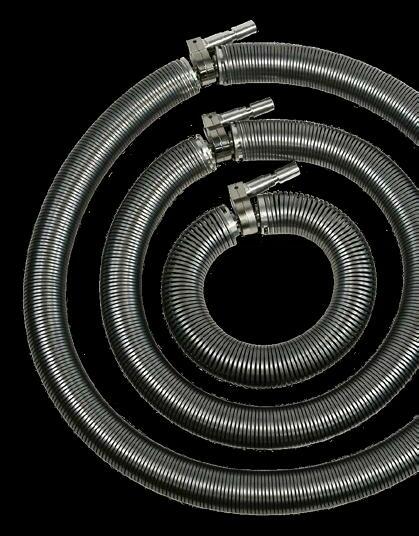

Emerson’s GasLoadForecasterTM utilises neural network modelling and regression analysis to help decrease supply risk and drive operational efficiencies by significantly minimising forecast calculation times. GasLoadForecaster is a gas demand forecast software tool for predictive management and modelling – a gas measurement model for official volume and standard composition – which can be aligned with purchase and sales agreements and alongside invoices and statements. It is a critical-decision-making support tool, providing greater flexibility and agility by eliminating the need for manual inputs when entering nominations.
Managed as an enterprise risk, companies are more likely to have greater success when working to overcome various risk factors via the implementation of a well-planned, comprehensive approach. GasLoadForecaster easily implements and integrates at a corporate enterprise level, delivered on-premises or in the cloud, to provide short-term hourly
and daily load shapes and results, as well as long-term forecasts to LDCs and other load-serving entities.
By correlating historic load, weather, nomination, and calendar and economics data, future gas loads can be predicted by leveraging the widest variety of data sources, translating them reliably into an accurate load forecast – scheduled or triggered when new data is received while actionable reports serve to inform all relevant stakeholders. It offers calendar and seasonal adjustments, in addition to manual modifications to the gas load due to known factors, such as an outage. Users can download interactive reports based on select parameters and in various formats.
GasLoadForecaster has been proven to significantly improve efficiency and the forecast accuracy associated with customers’

Detects pinholes and holidays using pulse DC High voltage Holiday Detector n Lightweight, ergonomic design provides comfortable all-day use, reducing operator fatigue n Regulated pulse DC voltage output that won't change under load ±5% voltage accuracy n Voltage calculator feature choose one of 11 international standards, and input the coating thickness to automatically calculate the required test voltage n Long Form Certificate of Calibration included with each instrument Optional handheld wand accessor y converts the detector into a wand configuration ideal for testing hard-to-reach areas DeFelsko Corporation l Ogdensburg, New York USA Tel: +1-315-393-4450 l Email: techsale@defelsko com Choose from a wide range of rolling spring and wire brush electrod custom sizes ava +1-315-393-4450 www.defelsko.com
gas demand. This is achieved by minimising person-hours associated with forecast calculation downtime – perpetuating the ability to automatically generate current, one-day out, or twoday out forecasts, as well as predict gas loads at a meter level or meter group level for each hour of each day. An Emerson user reported immediate, favourable results based on an uptick in forecast accuracy of more than 95% following implementation of the software.
GasLoadForecaster can be fully integrated with PipelineManager and PipelineTransporter or TransactionManager to ensure a more robust solution and a cohesive approach.
Aligned integration
Effective integration among commercial and operational activities simplifies daily routines and enables greater optimisation throughout the gas transportation business cycle. In quick order, a pipeline operator’s business processes can be established as a series of user-defined, managed workflows with initial business inputs fine-tuned into administrative menus and dialogues.
Implementation of the solutions are based on each customer’s special conditions as defined in various contractual arrangements. For instance, PipelineTransporter accurately allocates capacity to shippers with higher priority contracts, while PipelineManager accurately predicts and plans for safe operation of the pipeline, in turn maximising the ability to deliver a variety of gas products to paying customers. Real-time integration and streamlined operations occur through effective scheduling and automation of manual processes, linepack management, unaccounted-for calculations, and identifying additional capacity.
The PipelineTransporter toolbox acts as a virtual configuration point for imbalance management, allowing for quick adaptation to the ranking scheme for nominations as part of a contractual agreement. The mechanics for hydraulic validation in the
PipelineManager interface allow schedulers to validate operational conditions under a proposed schedule, optimise any imbalance status using ancillary services, and schedule by nomination priority.

This integration of solutions represents a comprehensive approach with an elevated level of connectivity and real-time simulation capabilities – a model that’s been vetted with effective outcomes in validation scenarios on a cyclical basis.
Energy complex
As the energy industry continues to evolve, the natural gas pipeline business is marked with signs of increased competitiveness, regulation implementation, and a lean in favour of fewer emissions on a global scale. Alternative energy spaces are becoming more competitive, diversified, and complex.
Using advanced software to achieve real-time integration of commercial gas and pipeline operations affords greater visibility into activity and inventories, and greater connectivity with customer requirements. Emerson’s software is enabling companies to meet commercial demands, while helping keep gas pipeline flows moving efficiently and safely – as well as accurately accounted for – to end users around the globe.
The oil and gas majors are preparing to ride a new wave of technological innovation to achieve challenging goals related to regulatory compliance, risk management, and cybersecurity in the commercial gas business. Adopters of a fully aligned software solution cite increased safety and security based on capacity optimisation, better imbalance management, and highly effective hydraulic validations among the expected benefits of automating processes.
This adoption will result in increased efficiencies in the transmission and distribution markets by encompassing all preflow and post-flow tasks in the transportation process, with effective integration between commercial and operational activities intertwined with overall business processes.
28 World Pipelines / JANUARY 2023
Figure 3. Emerson’s GasLoadForecaster provides a model forecast with users able to predict gas loads at the meter level or meter group level on an hourly basis.
Nilay Syam, Nokia, UK, discusses a widely employed technology for the monitoring of onshore pipelines.
s the digital age dawns upon us and the internet becomes all-pervasive, a key enabler of this transformational change remains hidden from our eyes. Meshes of fibreoptic cables – thin strands of pure glass – buried in the seabed and or laid underneath streets, buildings, etc., come together to form data superhighways, carrying over 95% of global telecoms traffic.
Presently, there are approximately 486 active or under-construction subsea cables with over 1300 landings. They stretch more than a million kilometres. Their terrestrial counterparts span even longer distances. Optical fibres are the internet’s ‘backbone’ and facilitate critical communications between computers, devices and people. From covering only a few meters in data centres to thousands of kilometres across oceans and continents, the intricate web that fibre optical cables weave is astounding. However, this is just the beginning, as experts noted. Subsea and terrestrial cables are taking on a new responsibility never imagined before.
The ability to sense
The telecom sector is steadily replacing copper wire with fibreoptic cables, each no thicker than a human hair, and which use light to transmit data over large distances. These same cables are fast emerging as potential sensors. Six decades ago, pioneering engineers and scientists began to understand the extraordinary opportunity of optical fibre sensing, and since its first patent in 1960, these imaginative minds have continued to explore the many exciting possibilities that fibre optic sensing has to offer.

The driving force behind fibreoptic sensing is distributed acoustic sensing (DAS) technology. Distributed sensing allows for real-time measurements along the full length of a cable – using itself to sense the environment – as opposed to conventional instruments which depend on sensors working at predetermined points. In a process known as Rayleigh backscattering, a DAS interrogator that is attached to one end of the fibre sends out optical pulses and looks at the light that returns from every microscopic piece of the fibre. By collating these tiny pieces of light and observing how they change thousands of times per second due to nearby vibrations, the interrogator identifies unique signatures and marks each type of event.
DAS can detect acoustic events around the fibre, and it is considered a dedicated sensor. As a result, it needs dedicated hardware and, sometimes, even dedicated fibre that is not used for telecommunications.
While DAS traditionally does not play an active role in data transmission or communications, it can be positioned alongside the communication line or network to protect the fibre asset or localise cuts. Apart from DAS, there are non-dedicated sensors carrying out a myriad of tasks, which also retain the ability to
29
sense. Any modern optical transmission has coherent transponders as its core building block. They convert electrical signals into light and vice-versa, transmitting and receiving hundreds of gigabits per second (Gb/sec.), relying on coherent modulation and digital signal processing (DSP). Further, when transponders receive light signals, it carries out several advanced algorithms to eliminate any channel corruption that was included during transmission over fibre to reconstruct the original sent message.
On top of transmitting and receiving hundreds of gigabits per second, current and future generations of transponders within Nokia 1830 PSS products will carry out advanced monitoring, sensing, and analytics based on light propagation information retrieved while carrying out DSP. At the same time, a coherent transponder leverages advancements in DSP to extract sensing and monitoring information without requiring dedicated hardware or fibre.
Fibre optic sensing applications
Telecom fibre, potentially a globally distributed sensor, is a critical infrastructure that needs to be constantly monitored. By sensing the environment, it provides information that can be dualpurpose, including the ability to identify potential network threats or disruptions, and yield information about an area where other sensors are sparse.
One of fibreoptic sensing’s most notable benefit fibre is the ability to monitor the conditions of a cable, which often runs through harsh terrain and shifting seabed. For instance, coherent transponders can help monitor the integrity of cable infrastructure, keeping it safe from any signs of failure and optimising capacity. Adverse weather phenomena like a storm or an earthquake, as well as human activities like construction work, can disrupt the fibre, which can be sensed through dedicated tools or directly at the transponder. It leads to faster restoration, increased uptime and superior service quality.
Repairing subsea cables is an expensive affair and fraught with danger. To achieve seamless service continuity, early and accurate detection of interference, faults or damage is crucial. Advanced cable monitoring systems can guide personnel to the exact
location of the event for prompt intervention. The cables also need to be safeguarded from activities such as trawling, anchoring, and dredging. Even the vibrations of fishing nets being dragged along the seabed could be detected as the trawling nets can pose a threat to subsea cables, which makes up around 70% of all damages to the network. Any early warnings can be outsized to the cable operator, giving them time to radio the vessel and ask it to steer away from the cable.
DAS is a widely employed technology for the monitoring of onshore pipelines when it comes to terrestrial cable sensing. Its leak detection, external interference and ground movement monitoring ability make it conducive for perimeter protection of critical assets and border control. When existing optical cable networks are utilised in urban areas, DAS provides sensing grids for high-resolution traffic monitoring and road conditions. Railway monitoring is another emerging area. With an optical cable along the track, DAS can produce information about third-party activity, detect moving trains and locate rocks, as well as landslides.
Opportunities and challenges
While fibreoptic sensing presents many opportunities, one of the main challenges that the industry needs to address is the managing of data. When monitoring and sensing occur in modern optical networks, an unprecedented amount of information is generated. This creates a data deluge, making it difficult to extract meaningful signals.
To overcome this challenge, there are innovative tools such as artificial intelligence or machine learning (AI/ML) that could be used to remove noise in raw sensory data, and automatically detect and track events of interest. As new threats emerge, such technologies can ensure rigorous adherence to established rules that govern the decision-making process.
Monitoring and sensing can prove to be the next big thing, amid the massive proliferation of optical networks. It’s been proven to reduce and contain risks by early detection of fires, storms and earthquakes. Fibreoptic sensing’s impact could expand even further to tackling the fallout of climate change and making communities smarter and safer.
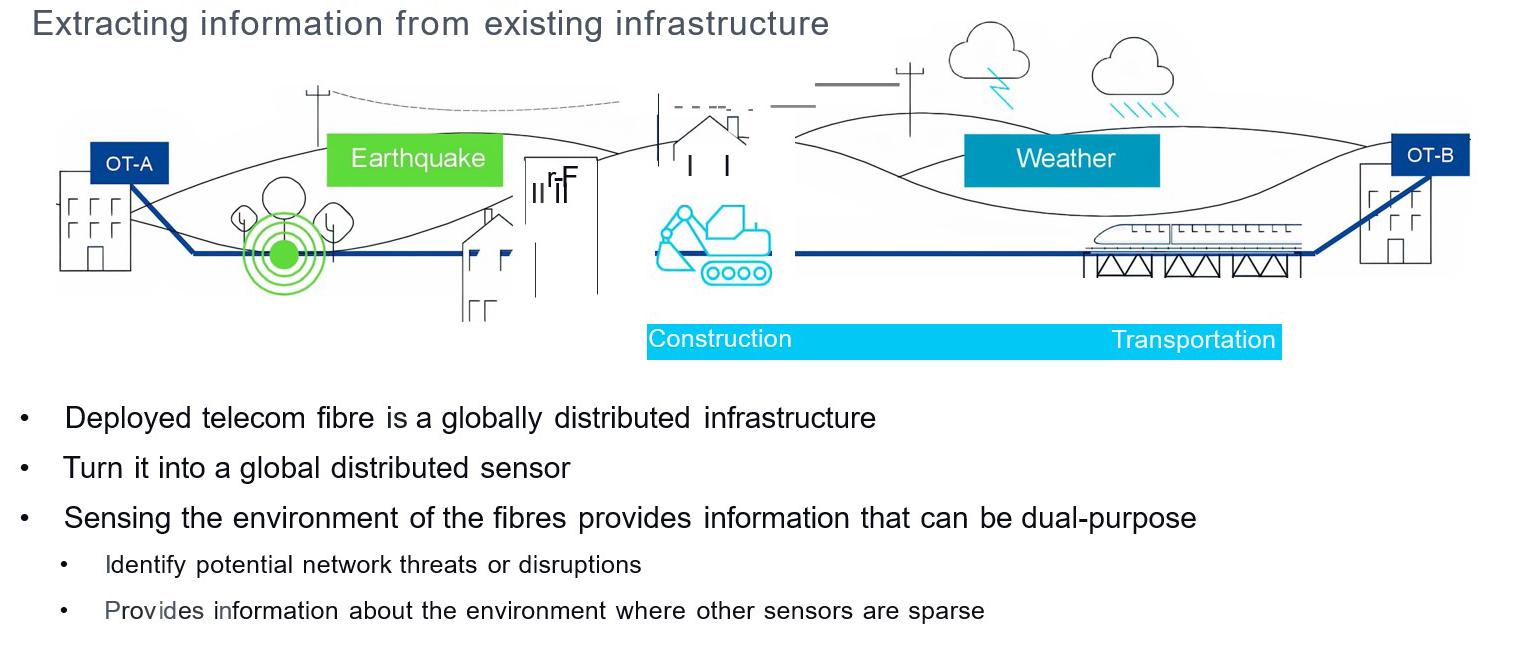
30 World Pipelines / JANUARY 2023
Figure 1. Sensing using deployed telecom fibres: how information is extracted from the existing infrastructure by deploying telecom fibres.
USA.
iven the world’s net-zero mindset, pipeline operators are taking advantage of every opportunity to reduce emissions and improve sustainability. No effort is too small; over the longterm, even modest changes can add up to a big effect. Improving integrity continues to be a way to reduce environmental impact; having accurate data helps ensure pipeline health and reduce risks.
While ILI is, for the most part, an environmentally friendly process, there are exceptions. Like almost everything else in this business, on the way to ‘green,’ things are rarely all black and white.
ILI tools are generally propelled by product flow, but pipeline pressure and other conditions must be right for there to be sufficient drive. Otherwise, operators will use differential pressure instead to move the
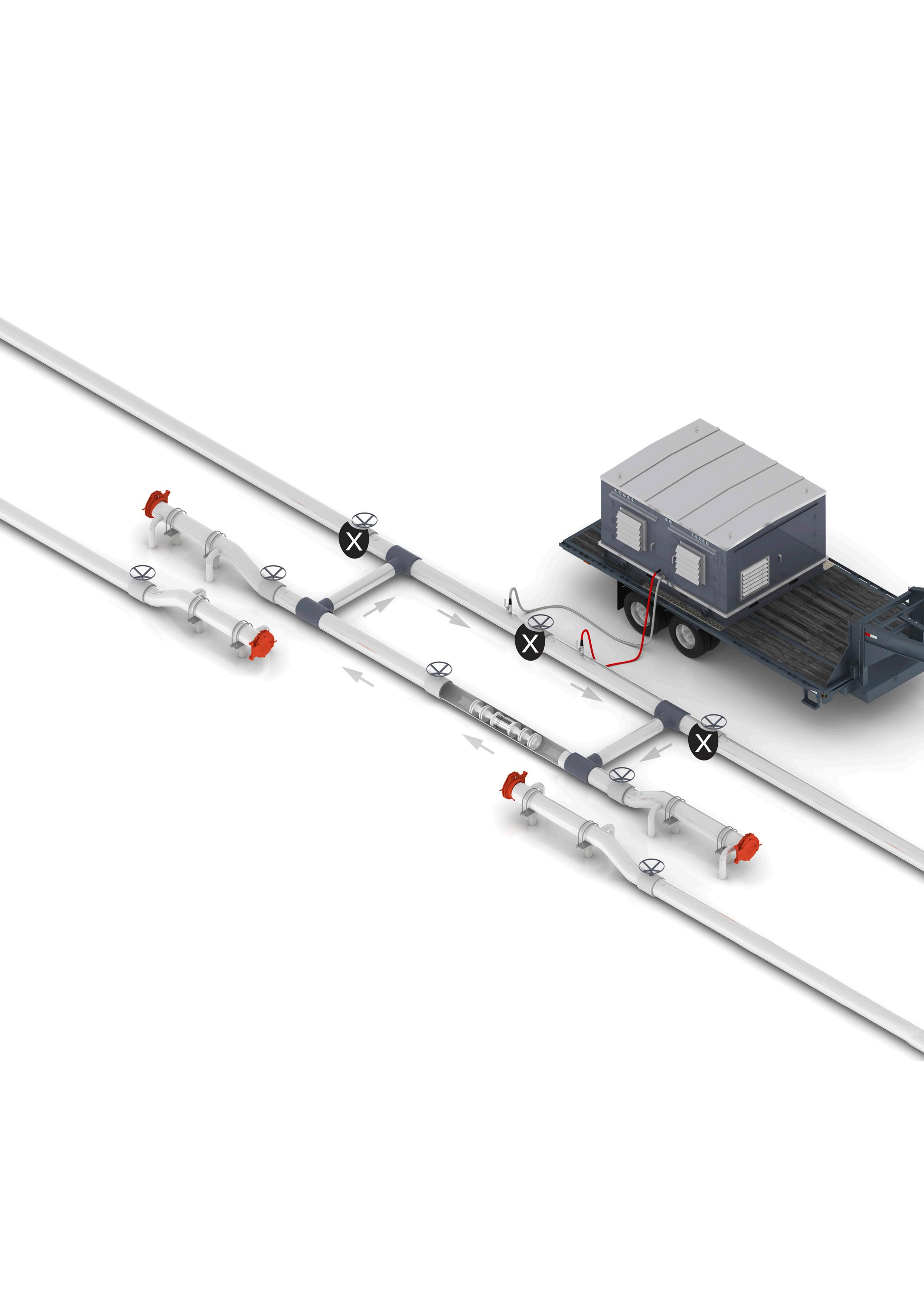
31
Controlling ILI tool speed with gas recompression delivers better data without venting or flaring, says Adam Murray, Vice President of Performance Products, WeldFit Corpration,
ILI tool through the pipeline. Unfortunately, that method requires a downstream release, meaning there’s venting or flaring and undesirable emissions along with it.
Despite the environmental advantage of using product flow to move ILI tools, there’s not much difference between it and differential pressure when it comes to controlling ILI tool speed, which is essential to data quality. The fact is, neither process is completely reliable in that regard.
For operators looking for superior ILI speed control, gas recompression using ReCAP TM is becoming increasingly popular as an option because it provides a constant rate of gas flow to propel the ILI tool. It also delivers an environmental boost. Gas recompression is more typically used as an alternative to venting (blowing down) or flaring when a section of natural gas pipeline is taken out of service for maintenance, replacement, or repair. Gas is recaptured from a pipeline section that has been isolated for depressurisation and is then rapidly transferred to an adjacent pressurised system. The result is a nearly emission-free operation – as much as 99.9% of methane emissions are captured in some cases.

Using ReCAP during ILI tool runs proves that opportunities to boost environmental performance can pop up in surprising places. It’s a win-win, improving ILI data accuracy and sustainability at the same time.
The need for speed control
What makes speed control so important is this: during an ILI tool run, sensitive, high-resolution sensors must remain in constant contact with the pipeline wall, or the data they return will be deficient or misleading. To help ensure good contact and optimum inspection results, every ILI tool is designed to operate within a consistent speed range. But sometimes the target is missed, and whether the tool has moved too quickly or slowly, there’s a problem.
For example, when there’s not enough force behind the tool to propel it past an obstacle such as a bend, dent, or change in wall thickness, the tool will stall. It will then remain in place until sufficient force builds up behind it to push the tool beyond the obstacle, usually at a speed far more than optimal. Low pressure ahead of the tool can intensify or lengthen the high-speed excursion, meaning the tool may not detect the obstacle itself, or any defects some distance in front of it.
On the other hand, when the ILI tool moves too slowly, the outcome is different, but no better: the tool will pick up defects but might exaggerate their length or depth.
Either way, data analysts won’t have the information they need to make actionable recommendations. The only answer is to repeat the run and incur the additional costs associated with the tool, field crews, and reduction in service.
32 World Pipelines / JANUARY 2023
Figure 1. Cross-compression functionality of ReCAPTM allows operators to carefully modulate the differential pressure enabling controlled movement of the inline inspection tool – that is speed control using product flow.
ILI success
To help regulate ILI tool speed, some manufacturers have incorporated speed control systems into their equipment. These improvements have reduced the likelihood of dataacquisition issues, although the fact that not every ILI toolmaker offers speed control limits product choice.
ReCAP’s gas recompression capabilities overcome the challenges associated with lack of speed control and equipment choice. ReCAP regulates ILI tool velocity by controlling the speed at which the product and tool flow through the pipeline section. Speed can be increased or decreased as necessary and is unlikely to fluctuate.
However, determining optimal flow speed to ensure high-quality data isn’t easy. It requires understanding pipeline conditions and including those variables in complicated calculations. In addition, the recompression equipment must be the appropriate size for the project – equipment that is too large can present just as many challenges as equipment that is too small. Without those safeguards, there’s no assurance of achieving optimal ILI tool speed or acquiring accurate, usable data.
A major American natural gas operator discovered that firsthand when a recompression provider used equipment that was too big for the job, resulting in the ILI tool moving too fast. Even after repeated attempts, the provider couldn’t get things right. One by one, five tool runs failed.
To avoid multiple runs during the next inspection, the operator contracted WeldFit, whose ReCAP technology features ‘straight-line’ recompression capabilities that allow technicians to fine-tune the flow of gas. By increasing or decreasing gas volume as the ILI tool passed specific tracking points, WeldFit crews kept the tool running at a constant speed.
“When it comes to pipelines, there’s often somewhat of a guessing game in play,” said Branden Allen, WeldFit’s Director of Field Services. “Critical factors such as gas flow rate and the pressure required to produce the optimal tool speed are simply educated guesses much of the time.”
“Our customers are looking for accuracy, adaptability, and consistency,” Allen continued. “That is what we provide with ReCAP and what makes it far better than anything else. We’re able to make the necessary adjustments to our machines to adapt to the specific requirements of the job, and provide the performance needed to produce accurate results.”
Propelled by ReCAP recompression equipment, the ILI tool delivered exactly the data the operator needed, all in one run. What’s more, there was no product vented or flared, and ReCAP technology captured 99.99% of methane emissions during the ILI run.
In other words, ReCAP gave the operator more control over integrity and sustainability – and that was really no surprise.

Effectively cleaning multi-diameter pipelines has been a challenge for years. With an increase in ILI requirements, properly cleaning your lines is more essential than ever. However, high cost and limited options have made multi-diameter pigging difficult. With Drinkwater’s new multi-diameter brush pig, those challenges have been addressed.



MULTIPLE SOLUTIONS FOR MULTI-DIAMETER PIGGING MULTIPLE SOLUTIONS FOR MULTI-DIAMETER PIGGING +1 337 828 0177 | 10789 Hwy 182, Franklin, LA 70538 USA +1 713-275-8124 office | 27761 Robinson Road, Conroe, TX 77385 USA DrinkwaterProducts.com | Sales@DrinkwaterProducts.com Custom Pig Design | Multi-Diameter Pigging | Maintenance Pigging | Step-Up Pigging Plans | Pig Tracking Equipment
Pipeline operators and energy producers face daily challenges maintaining infrastructures and dealing with contamination enemies, such as the formation of black powder, which can jeopardise the wellbeing of pipelines.
Black powder is an unavoidable contaminant which occurs in virtually all oil and gas pipelines. It forms when the carbon steel pipeline wall reacts with water, oxygen, hydrogen sulphide and/or carbon dioxide.

It can vary in chemical composition, particle size and consistency. Depending on pipeline conditions, it mostly consists of iron oxides, iron sulphides, chloride, sodium and also natural process residues such as silica, sand, and clay. Very often it forms as a sludge but can form as a liquid suspension or dry powder. It tends to stick to the pipe wall, in doing so exposing it to corrosion formation.
Excessive accumulation can be detrimental to upstream and downstream equipment and the integrity of the finished product. It also reduces the pipe diameter, thereby restricting flow. In addition, continued exposure increases the risk of pipe fracture and leakages of finished product or toxic gases, and even fires or pollution.
Black powder costs the pipeline industry millions every year in downtime, product loss and maintenance costs, not to mention environmental issues. It
Tony Joynston, Eclipse Magnetics, UK, discusses some common downstream
problems often arising from the pigging process.
35
is estimated that pipeline corrosion costs the US gas industry US$1.4 billion annually.
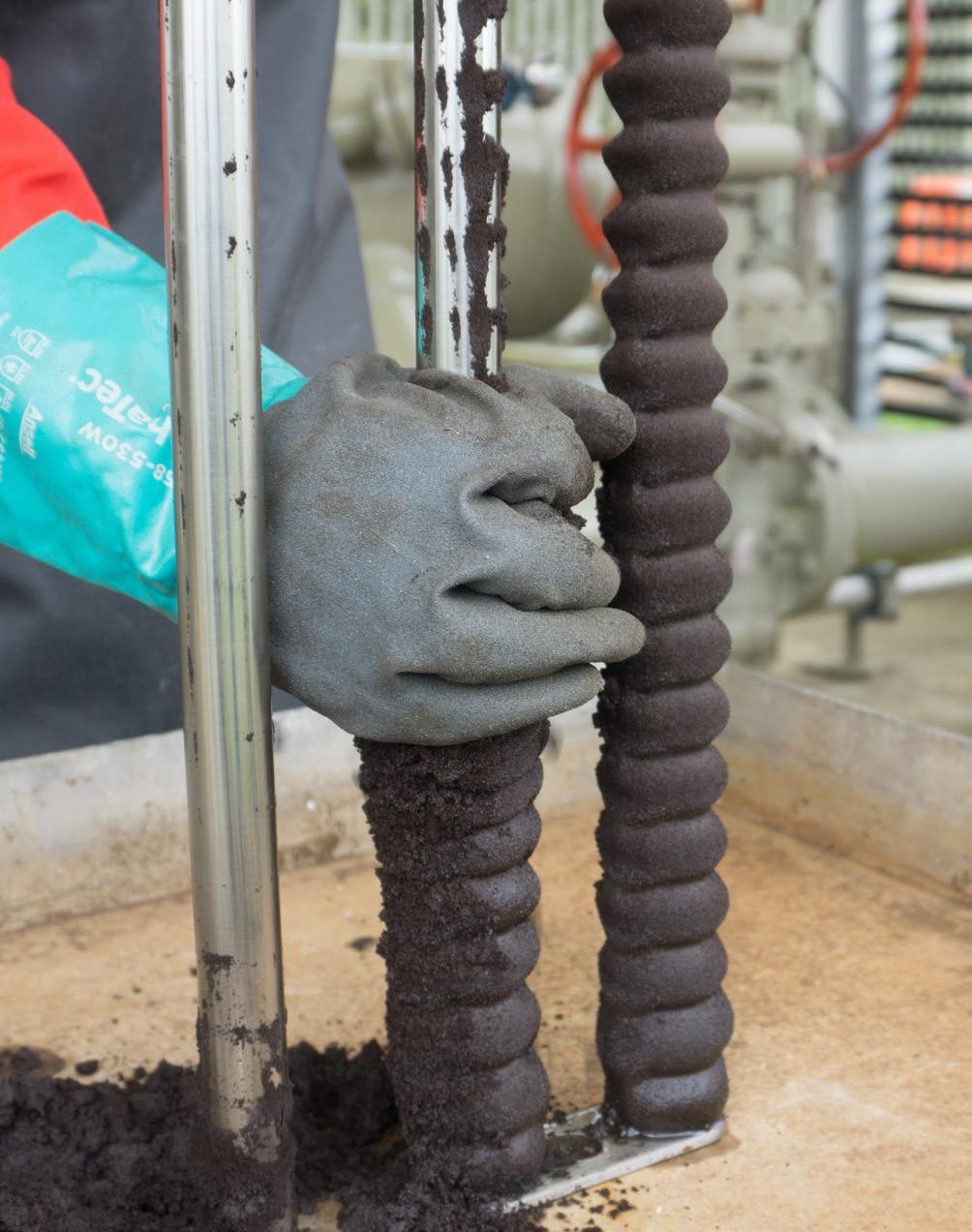

What is pigging?
Black powder formation is unavoidable, but measures can be employed to minimise the adverse consequences and disruption it causes. Stage 1 protection is to remove the black powder as it starts to accumulate in the pipeline.
The tried and trusted method of cleaning the internal pipe surfaces is a process widely known as ‘pigging’. A typical ‘pig’ is a bullet shaped fixture which fits tightly to the profile of the internal pipe wall. Typically, this involves placing the ‘pig’ into a ‘pig launcher’: pressure is then built up behind the pig in order to push it along the pipeline until it reaches a ‘pig catcher’ or ‘receiving station’. As the pig travels through the pipeline, it scrapes the internal pipe wall. The accumulation of black powder residue is then pushed downstream in front of the pig to a receiving station. ‘Smart Pigs’ are often used which also have sensors, and detect corrosion and pipeline deformation.
Is this the end of the story?
Pigging is an effective means of managing pipeline corrosion, but it can just accentuate problems downstream if not met with an adequate filtration or separation system. Stage 2 is equally important, which involves dealing with the waste residues created during pigging.
When the pigging waste residue reaches the receiving station, it is diverted through a bypass filtration or separation system. Traditionally this consists of a series of cartridge or barrier filters which remove the contamination from the process. The filtered clean product returns to the pipeline stream.
Typical gas transmission pipelines can be up to 48 in. in diameter, and the sheer volume of pigging waste black powder can cause serious problems to downstream processes, particularly rotating equipment such as turbines, pumps, and compressors. Valves and sensitive electronic instrumentation can also be damaged, leading to downtime and costly repairs.
Upstream solution, downstream problems
The key reason the problem is so prevalent is because, during the pigging operation, the black powder particles can fragment into fine particles. The majority of these fragments are less than 10 μm in size. Typical cartridge or basket filters can vary in micron rating from 10 - 200 μm; therefore, the ultra-fine particles simply pass through. This then has a detrimental effect on downstream equipment.
Traditional filtration or separation systems can be overwhelmed by these surges of black powder residues during the pigging operation. Typical filters have a limited capacity which soon becomes loaded, causing a restriction in flow and buildup of back pressure. The volume of pigging debris can mean that the filters need to be changed more frequently, leading to increased maintenance costs and line downtime. In some cases, membrane style filters can also collapse or burst under the strain of excessive debris, thereby releasing all the black powder contamination downstream.
In addition to the downtime, the resultant increase in disposable filter consumables during pigging also increases
Figure 1. A typical pig launching station.
36 World Pipelines / JANUARY 2023
Figure 2. Easy clean magnetic rods.
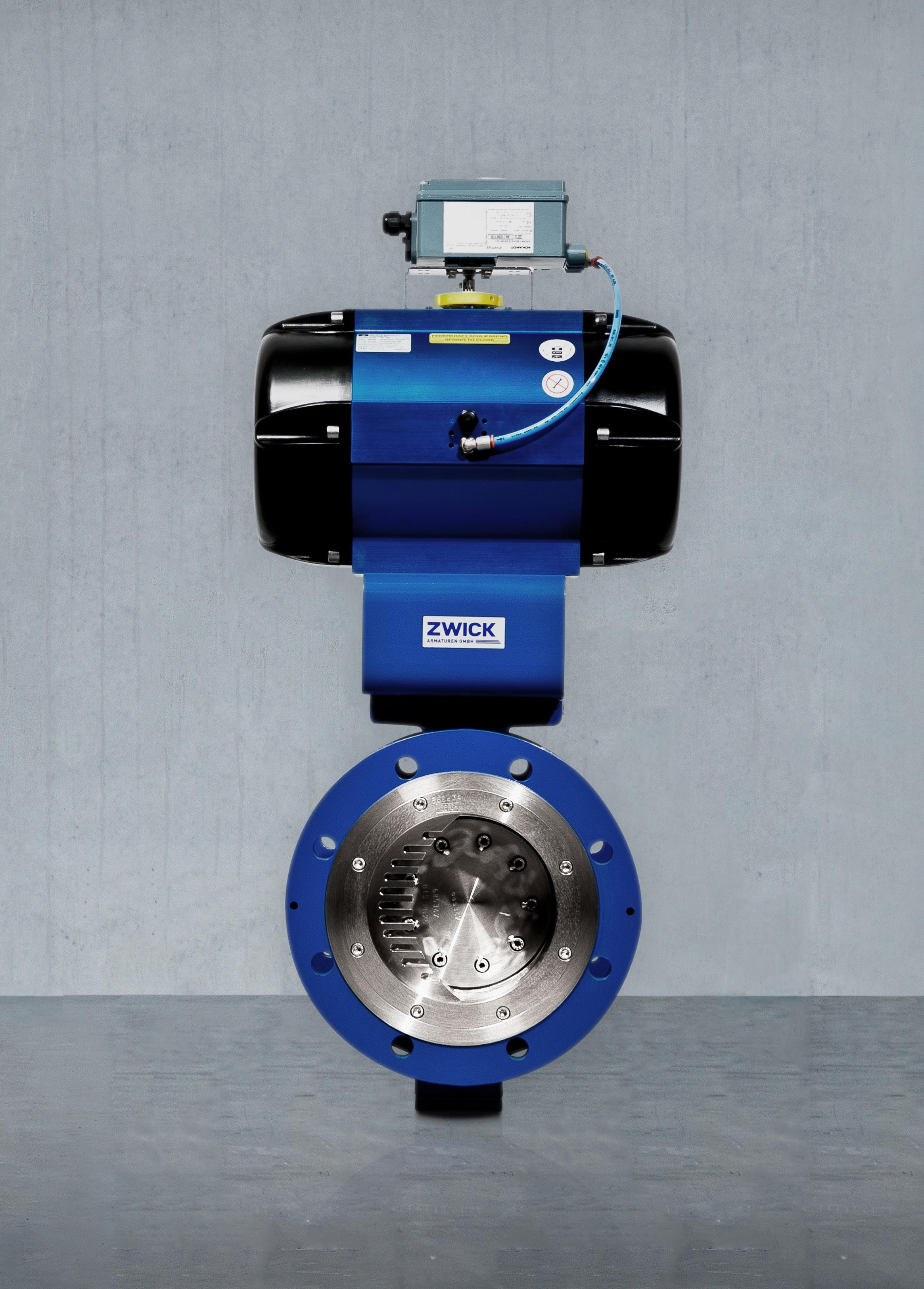
www.zwick-armaturen.de *acc. to DIN EN 12266-1 100 % cOntrOL VaLVe 100 % tiGHt* tri-SHark
operating expenditure. Changeout costs can run into many thousands of dollars, with the ongoing requirement for replacement cartridges. In addition, the disposal costs and risks of dealing with contaminated filters are heightened. Contaminated filters are often classed as hazardous and need specialist, expensive handling services. This is particularly concerning, where a common chemical form of iron sulphide, called pyrrhotite, is present. Pyrrhotite exhibits pyrophoric qualities when exposed to air, resulting in spontaneous ignition
An increase in consumption of disposable filters during pigging also presents environmental issues. Used filter media are mostly not recyclable and add to the increasing landfill or incineration emissions burden. Waste reduction is a hot topic, as many countries are now working towards net-zero emissions and stringent landfill reduction targets. Creating excess waste is not a good look for already under fire energy company brands.
Separation and filtration technology options

An effective filtration or separation system is vital for transmission pipeline, particularly during the pigging operation to deal with the residues generated.
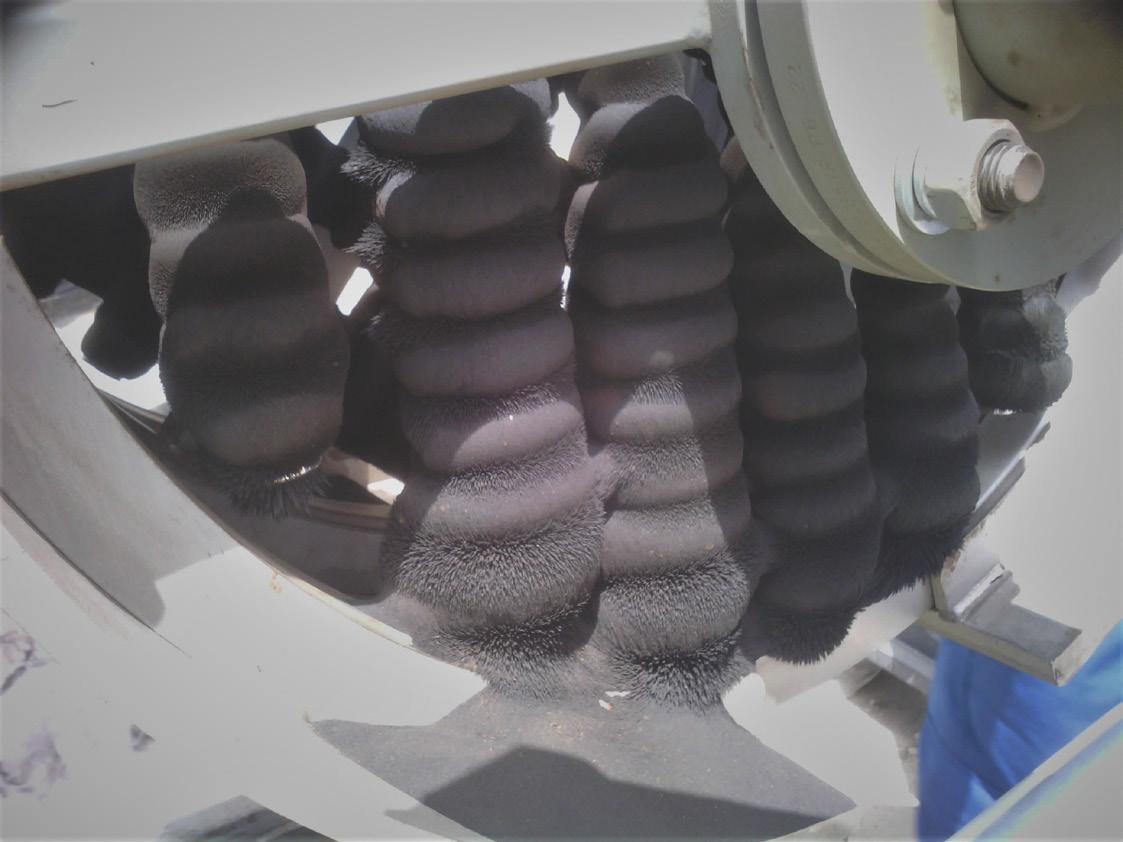
The common method for separating pigging waste uses traditional barrier or membrane filters. Typically, this would be a series of conventional filter vessels suitably positioned to extract solid particles from the flow.

During the pigging process, this mode of separation can sometimes be challenged due to the volume of contamination generated. As outlined, the cartridges can be overwhelmed, leading to collapse or at best needing frequent change, giving rise to downtime, increased maintenance costs, and excess hazardous waste. The effectiveness of barrier filters is restricted by their micron rating.
There are other filtration options such as cyclone/ helical style separators which harness natural centrifugal forces to separate unwanted debris from the stream. These methods have the advantage of no disposable elements and are self-cleaning, but during the pigging process they are also challenged by the volume of waste. They tend to have limited flow rates and are prone to creating back pressure. They are also restricted by particle size, typically only effective down to 10 μ m –anything smaller could pass through and be a hazard downstream.
Magnetic filtration and separation technology
Magnetic filtration has been around for many years and is well established in the automotive and food processing industries, where a high-quality end product is paramount. However, within the oil and gas industry it is still viewed as a relatively new concept. It involves applying high intensity magnets to tackle general black powder management, particularly during the pigging process when the demands are greatest on filtration and separation systems.
Figure 3. Magnetic filter cartridges: one loaded with black powder and one clean.
Figure 4. Typical consumable filter waste.
38 World Pipelines / JANUARY 2023
Figure 5. Inline magnetic rods after pigging operation.
Magnetic separators or filters can be fitted ‘inline’ upstream of any existing cartridge filtration station. When the black powder contamination is subjected to the magnetic field, it is attracted to a series of magnetic rods, thereby removing it from the stream.
Installing a magnetic filter can remove ferrous black powder contamination in bulk before it reaches the cartridge filter station, thereby minimising the risk of the waste volume overload problems generated during pigging.
Magnetic separators or filters are designed to cope with any pressure range and flow scenario; they are designed to capture high volumes of contamination before they become saturated, thereby reducing the requirement to clean or maintain. Typically, they would be installed as a zero-downtime duplex system, which means that the flow can be diverted to a back-up unit while the primary filter is being cleaned. The flow dynamics and magnetic field orientation ensure that they can never block or burst.
Magnetic filters are driven by ‘free’ magnetic energy, they require zero consumables or energy source. This significantly reduces expenditure on disposable items such as cartridges, particularly during the pigging process, when volumes are challenging.
In addition, by reducing traditional filter usage the waste stream is reduced, thereby helping with ISO14001 and netzero targets, and reducing the risks and complexity of hazardous waste disposal.
The latest magnetic technology utilises high strength neodymium rare earth materials, creating a high intensity magnetic field. This ensures that almost 100% of black powder particles are removed, including the finest submicron sized fragments. This ensures that downstream components are protected.

In summary, installing a magnetic filter can significantly reduce costs, downtime, waste disposal, and protect downstream components.
The potential of magnetic separators is illustrated by an installation on a BP UK transmission pipeline. By installing a magnetic separator upstream of 2 cartridge micro-filter vessels, BP reduced their annual expenditure on disposable cartridges by 75% and the volume of contaminated filter waste generated by a massive 95%, plus a 75% reduction in operator intervention and downtime. Although the line had only an 8 in. diameter, the direct financial gains were identified over a period of five years at over US$2 million in reduced
maintenance and consumable costs, in addition to non-tangible environmental and reduced risk of exposure to hazardous substances.
Conclusion
To optimise pipeline production, pigging is an unavoidable and necessary process. Downstream equipment therefore needs to be adequately protected from the consequences of pigging. Dealing with waste residues is just as important as the pigging process itself. The use of an innovative and effective separation or filtration system will significantly reduce consumable costs from conventional filtration systems along with the associated downtime. It will protect downstream equipment and make a positive contribution to environmental waste disposal.
THE MOST SOPHISTICATED IN THE WORLD
FEATURING CAMOUFLAGE TECHNOLOGY
Building on Dairyland’s proven history of industry-leading product lines, the PCRX® represents the next technological leap forward in decoupling technology. Using a sophisticated design, the PCRX’s new camouflage technology renders it virtually invisible to interrupted survey testing making it easier than ever to protect and maintain your CP system.
Scan to watch our on-demand webinar, Overcoming capacitive effects on interrupted surveys with PCRX technology
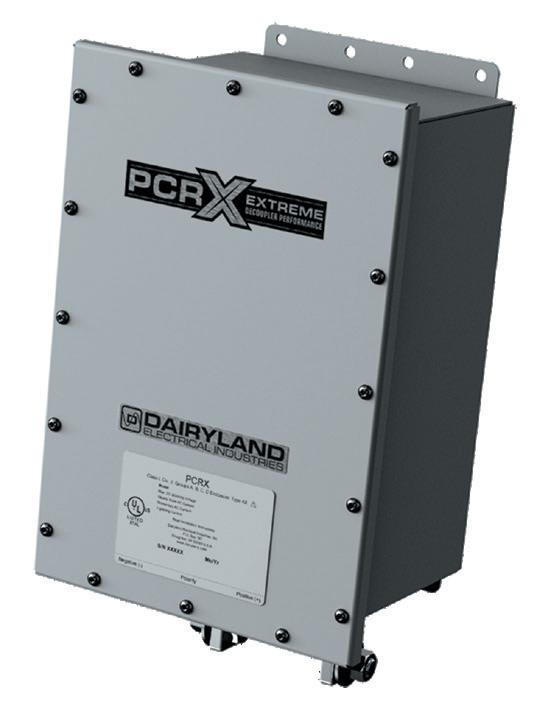

Matthew Green, CSNRI, USA, explores using today’s technology and testing know-how to make a better repair option.
Pipeline integrity repair is a critical component to the safe and effective operation of pipeline assets, and composite repairs play an everincreasing role in providing repair options. This article will discuss composite repairs and how design methodologies, experience, and testing continue to fuel more widespread acceptance, additional
defect scopes, and continuous improvement of the composite repair implementation process.
New technology
For almost four decades, composite repair technologies have provided valuable alternatives to operating companies in maintaining the integrity of their

41
high-pressure gas and liquid pipeline systems. Early adopters of the technology helped to push the usage of these beneficial materials to where they are today. As with all technology, increased usage drives increased scope of usage, and there have been extensive and comprehensive full-scale testing programmes dedicated to pushing the boundaries and opening new defect repair options. These have been funded jointly by industry and manufacturers, and have yielded successful results, further showcasing the full range of benefits that composite materials can provide. This is valuable as it provides a strong foundation for using composites as a repair material in this manner.
The benefit of this history and background is that we can build a better repair option based on experience and lessons learned. Why settle for the same old technology with no updates, current testing, or product improvements, when you can use the latest in innovation and performance with composite materials? While it might be a unique experience to drive a Ford Model T to a car show and have some fun, you aren’t going to use that for your everyday travel and work needs. I’ll take my F-150 King Ranch for that, thanks. But on the other hand, you also want the ‘latest and greatest’ to be proven, and that’s where the testing, validation, and verification come into play. At CSNRI, our company is proud to be at the forefront of innovation and improvement for ECRSystem TM (engineered composite repair systems) and composite technologies for the oil and gas industry.
While composites are not new in and of themselves, relative to traditional welding repair techniques, composites are still considered a ‘new’ technology for most pipelines. There have been mixed adoption rates from the industry, with some pipeline operators using them for a wide range of repair needs, while some companies still have yet to embrace the beneficial repair alternative as everyday integrity tools. Whatever the reasons, many of the testing programmes completed to date have proven their success and benefit time and time again, and following those, a new wave of composite repair systems development and testing has been underway to take them to the next level of performance. Even so, usage and acceptance has been on
a steep incline over the past decade, spurring a significant growth of the composite repair industry.

Enhanced performance
With the relative boom in composite materials being utilised as an acceptable means for repairing anomalies commonly found in pipelines, the need for improved performance and an in-depth knowledge of what makes these technologies work has also increased. Since the early 2000s, there have been dozens of industry-sponsored test programmes, research endeavours, and industry collaboration on the proper use and design of these materials. With a growing demand for improved performance and products within the pipeline market, it has spurred the need to develop a newer generation of testing for these materials to demonstrate performance in more and newer defect types. One specific area of focus has been to test the burst capacity of composite repair technologies. While this is a useful test to conduct, the end result does not generate a sufficiently encompassing metric for evaluating the true performance of the system in operation. Further, burst testing alone does not sufficiently identify limitations in the composite repair system. In essence, a burst test alone does not give the user sufficient guidance as to effectiveness of a design or product performance; and this test can be gamed.
Long-term considerations
Recognising the need to further validate and quantify the bounds of composite repairs for use in real-world scenarios, a host of testing programmes were embarked upon. One such programme was an industry joint testing programme conducted to validate the long-term effectiveness of composite repairs. This programme, funded by pipeline operators and repair system manufacturers, together with Pipeline Research Council International (PRCI) backing and executed by Stress Engineering Services, focused on all aspects of a full-service repair, with multiple repair systems remaining in the test programme for 10 years (reference MATR-3-4 ‘Long-term repair of corrosion performance study’). This study (focused on corrosion defects) included not only burst testing of repaired defects, but also
42 World Pipelines / JANUARY 2023
Figure 1. Brief history of composite repairs.











The BISEP® with extensive track record provides industry first double block and bleed isolation while maintaining production. Hydraulically activated dual seals provide fully monitored leak-tight isolation, every time, any pressure. ZERO-ENERGY ZONE SINGLE HOT TAP POINT DUAL Leak-Tight Seals double block & bleed isolation PRODUCTION MAINTAINED BISEP® Hot Tapping & Plugging ISOLATED PIPELINE
subjected the repairs to the same conditions as normal operations: buried repairs, cathodic protection system installed, and pressure cycling based on typical pipeline operation. These repairs were monitored over the course of years, removing samples at established intervals to perform a burst test after operation. This programme proved undoubtedly that composite repairs are capable of longterm usage and can successfully be designed for decades of use.

Other defect types
This provides a great foundation and confirms the effectiveness of composite repairs, but another question remained. What about other defects that are not just
corrosion? From this, many more testing programmes have been born to continue to test and validate the viability of composite repairs for a host of other defect concerns, especially where fatigue and pressure cycling become critical factors for the composite repair design methodology to address. For many of these defect types, such as dents, wrinkle bends, crack-like defects, and others, this becomes the driving factor which must be addressed not only in the validation testing, but in the design methodology for the repair as well. It is not the same as a simple burst repair calculation to show that the material is strong enough, but now must address the long-term effects of other stress/strain states within the defect and composite repair system.
Significant work has gone into creating not only the testing programmes to begin to address this question, but in the materials, methodologies, and testing equipment as well. As these have continued to advance, so has the ability to expand the use of composite repair systems for a wider range of defect types mentioned.

Cracks
By working with industry experts at testing organisations, and with pipeline owner/operators, the amount of testing and validation has increased significantly. This increase has led to a multitude of test programmes for defect-specific needs, which has in turn increased the understanding of how composite repairs can be safely and successfully used,
Figure 3. 10 year testing programme showed tremendous results in long-term effectiveness for composite repairs.
44 World Pipelines / JANUARY 2023
Figure 2. From left, clockwise: 1 million lbf tensile load frame; 3 million ft lbf four-point bending load frame; before and after composite repair bend test. (Pictures courtesy of ADV Integrity, Inc.)
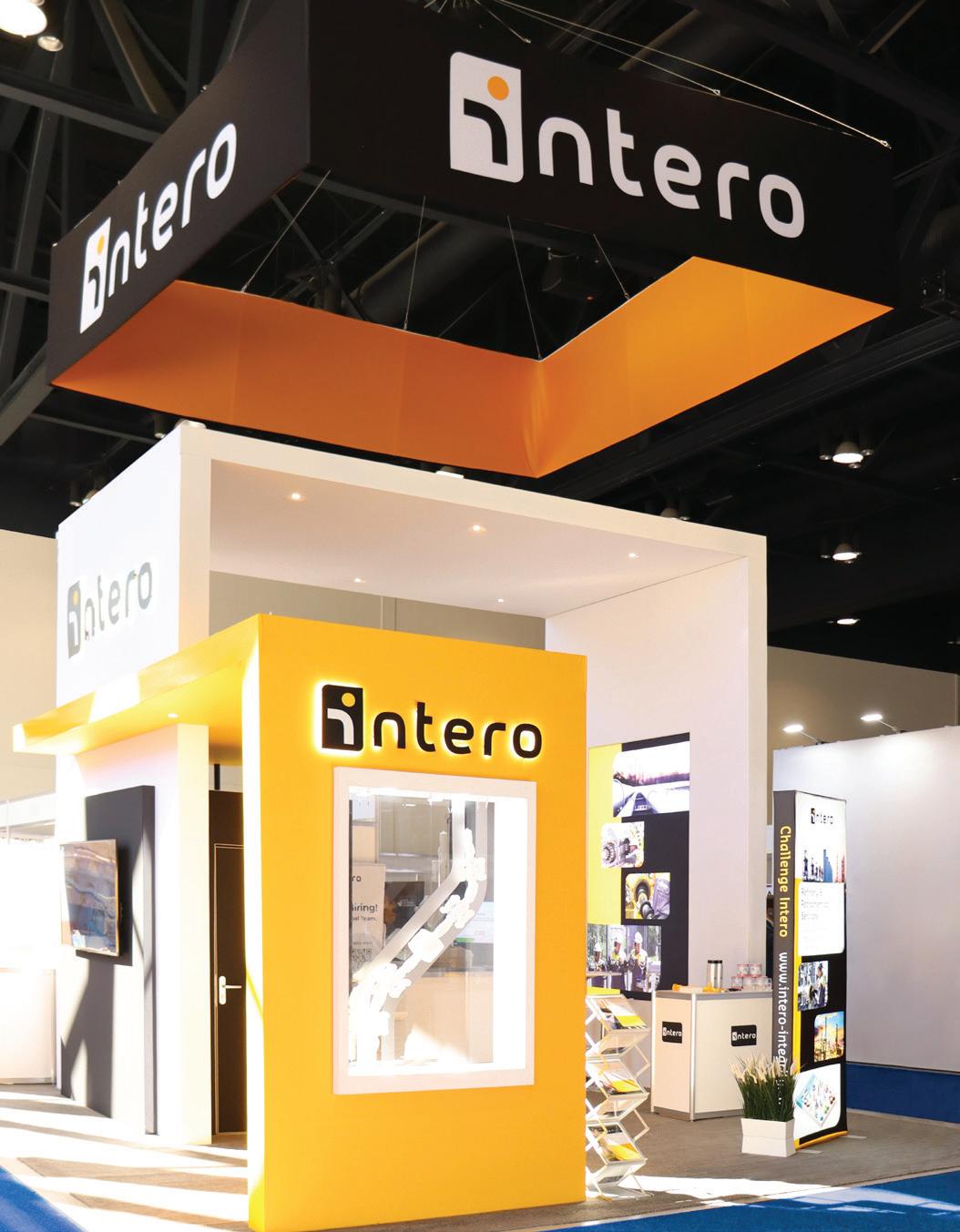
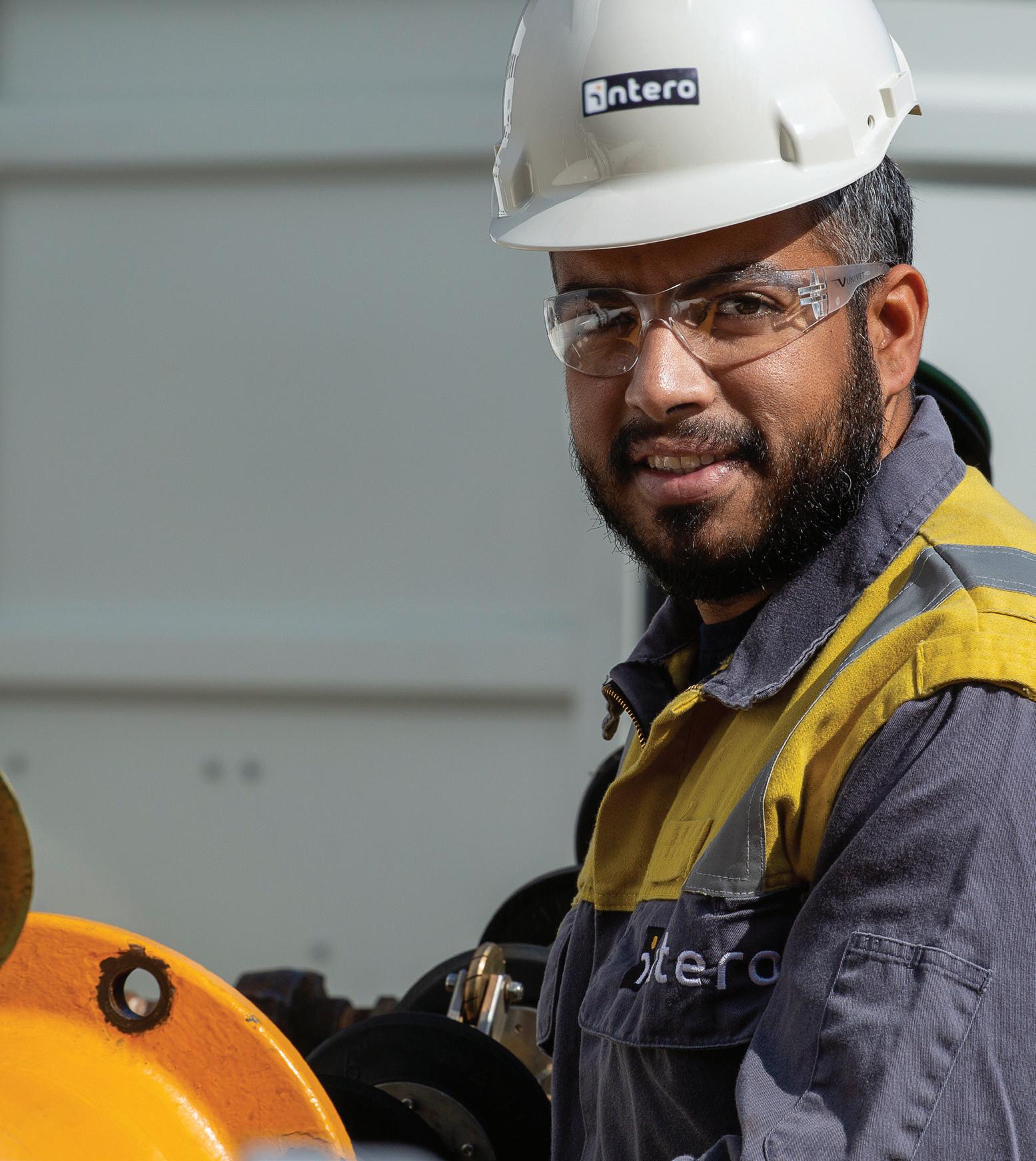
Using innovative, ever-evolving solutions and our expert knowledge, we provide the best services to support all of your operations. We have the in-house capabilities to combine the services you need: inspection services, pipeline management, environmental services, and industrial services. Contact our team for more details: info@intero-integrity.com intero-integrity.com Meet Us at PPIM! Booth #801
and consequently increased the overall acceptance of composites in general. Dents and wrinkle bends were some of the first non-corrosion focused defects that the industry looked at. But it wasn’t long before new defect scopes were introduced, such as cracks and crack-like defect testing, and some of the most recent work on reinforcing girth welds to protect against geohazard events.
In 2015, the AtlasTM product was thoroughly tested on seam weld cracks at 33% and 75% deep. This programme, which included testing labs and industry regulatory involvement, led to the repair of several dozen permanent repairs on an ethylene line with low crack depths – close to the 33% depth tested. This line could not be easily welded on or de-pressurised without incurring a major expense, but with the use of composites, conservative repairs could be on the live line with minimal expense. Further testing was performed on the Atlas system in a joint industry project examining cracks of 15% and 50% depth. Again, the results here showed tremendous success in not only burst pressure restoration but also demonstrated the composites’ ability to greatly reduce a crack’s propagation rate – essentially increase the cyclic life of the pipe. Beyond just demonstrating pass/fail scenarios, CSNRI has gone further and developed a predictive tool utilising classical fracture mechanics and composite theory to determine the remaining capability of a repaired crack defect.
A third major test programme provided an ideal scenario to test the prediction of this programme to actual results. Before testing the pipe samples, material properties such as fracture toughness were determined. After testing and

comparing nearly 60 samples in both burst and cyclic failures, this tool has been shown to be very conservative in its assumptions. Now composite repairs can be installed on crack-like seam weld defects with more confidence than ever, knowing that a tested fracture mechanics model supports the engineering design.
Conclusions and future work
Based on multiple industry testing programmes and material knowledge gained over the course of 20 years, composite repairs have proven, both in testing programmes and realworld execution, that they are a safe and reliable repair option for pipeline integrity. Qualification testing according to the ASME PCC-2 Article 401 and ISO 24817 standards is a great foundation, and significant work has been completed above and beyond these standards to validate the methodologies for composite repairs across a variety of defect types.
CSNRI remains at the forefront of this work, and continues to validate and expand the boundaries for composite repair materials. Unique and independent test programmes, along with the work done in concert with many pipeline operators and joint-industry programmes, have provided for this continued advancement and understanding of the specific needs of the composite materials and defect types. With more than 40 years of repair design, qualifications, field experience, and track record, the future is bright for composite repairs and their successful implementation into pipeline integrity programmes.
46 World Pipelines / JANUARY 2023
Figure 4. Burst test result of crack repair after cyclic pressure testing.

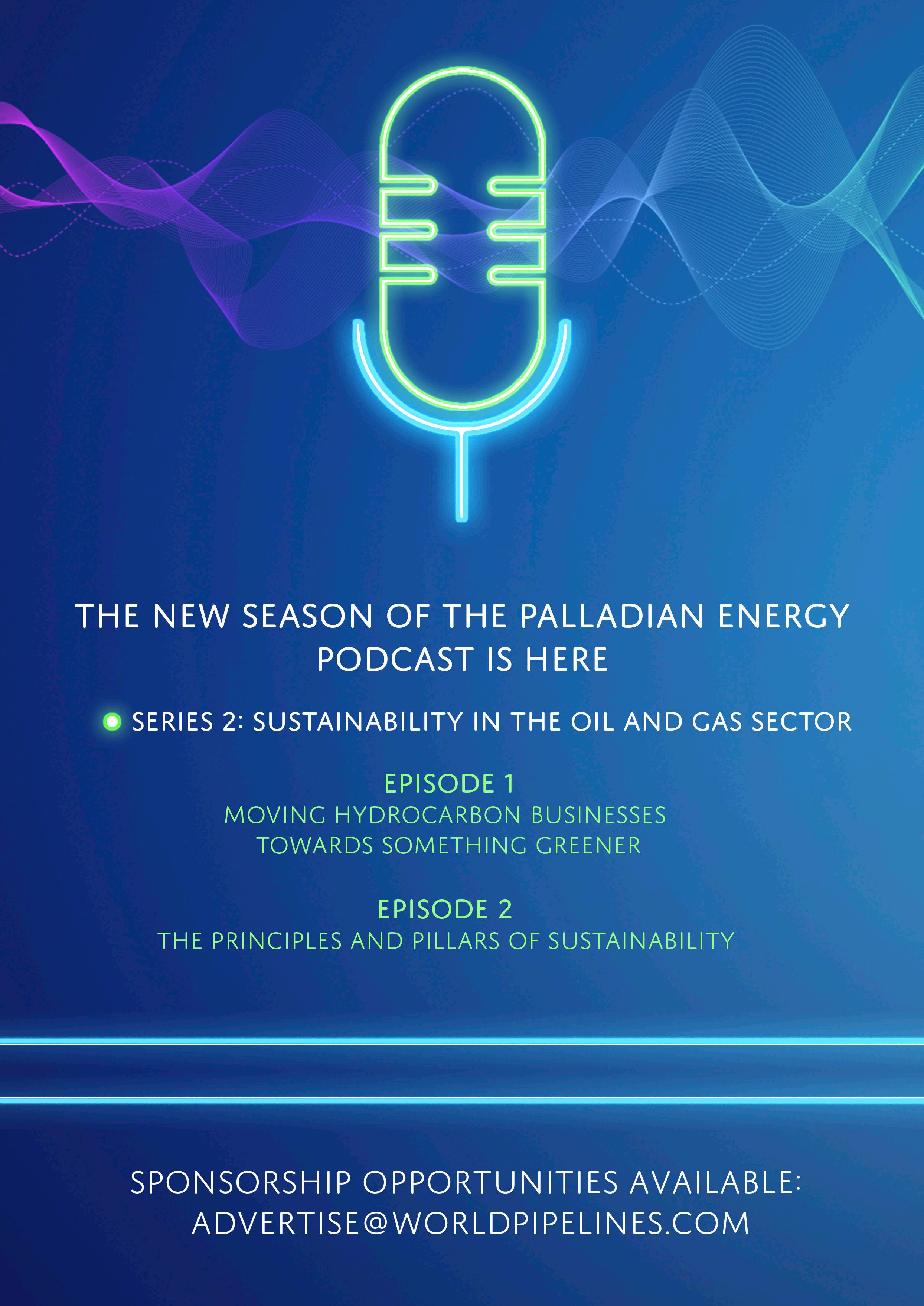
s assets age over time, the oil and gas sector face the ongoing challenge of ensuring efficient production and consistently maintaining pipeline integrity. As operations move into deeper waters and more challenging environments, advances in technology have become more critical to ensure these pipeline assets perform to their optimum efficiency, integrity is maintained and lifespan is extended.
Tracerco’s DiscoveryTM and ExplorerTM technologies have been specifically designed to provide accurate, in-depth and real-time data insights.
Industry leading technology

Through the development of its market leading technologies Discovery and Explorer, the business has developed unique and groundbreaking methodologies that allow for the online inspection of a pipe from the outside without the need to remove the protective coating or interfere with production. Both technologies are already proven global successes, deployed by oil and gas operators across the globe.
Developed to provide owner operators with an enhanced understanding of a pipeline, its coating and process fluid – all whilst fully operational – Discovery has fast become the market leader with the technology deployed on assets across the globe, most recently on deepwater projects in both the UK, Europe, USA, and West Africa.
The use of pioneering subsea CT scanning technology – the first of its type in the industry and commonly used for non-invasive medical diagnostic technique – has revolutionised pipeline maintenance by providing critical flow assurance and integrity data without the need for coating removal, and all in real-time.
The revolutionary technology provides accurate sizing of wall thickness in minutes by taking a high-resolution image of the pipe wall provided from an external scan of the pipeline. This tomographic image then pinpoints any flaws within the pipe walls, identifies location, amount and density of any material or deposits – all within a density difference of 0.05 g/cm 3
Easily and quickly deployed – using an ROV and simply clamped on to the pipe – Discovery has been utilised across a wide variety of pipeline designs, investigating both internal and external corrosion, locating blockages and identifying flow issues, and is the only technology that is externally verified and field proven.
Independently verified by the Lloyds Register New Technology Process, Discovery provides the technology for deepwater pipeline maintenance, a solution for those pipelines that cannot be inspected by conventional means. It delivers an alternative where operators want to eradicate intrusion and loss of production, delivering savings of up to 35% on the cost of inspection campaigns, compared with conventional scanning techniques. Combine this with Tracerco’s inbuilt fast scanning technology, reducing overall scan time by up to 80%, and operators across the globe are
49
Donald Ballantyne, Tracerco, UK, explains how the business is meeting the challenges of deepwater pipeline maintenance.
benefitting from maximum data capture never before available in the market and from one single inspection.
To date, Discovery has successfully gathered valuable data across tens of thousands of scans, enabling operators to refine and improve the efficiency of existing pipeline models.

Like Discovery, Tracerco’s Explorer tool is a market first, providing screening services to identify areas for further investigation, and often as a precursor to the deployment of Discovery. Utilising unique technology, Explorer enables pipelines to be quickly screened for any deposits and has the capacity to screen several kilometres of line per shift –all without any interruption to production.
A fast-screening pipeline inspection technique, Explorer is a unique industry instrument with the ability to screen subsea pipelines for content and deposit build-up at rapid speed. Non-intrusive – with no pipeline preparations needed – Explorer works by measuring content from the outside of the pipeline with no need to remove protective coatings or interrupt production to carry out the inspection. As such, Explorer provides owner operators with one of the most cost-effective solutions to flow assurance problems.
Operating at depths of up to 3000 m (10 000 ft), Explorer has the capability to inspect pipe diameters from 2 - 60 in. It has the ability to screen a variety of different piping systems: standard rigid pipe (coated or uncoated), pipe-in-pipe, bundles, and flexibles. Detecting the location of deposit build-up by measuring the density profile of the pipeline and then analysing any detected anomalies, Explorer provides a detailed profile showing mean densities of pipeline contents and amounts of deposit based on assumed densities.
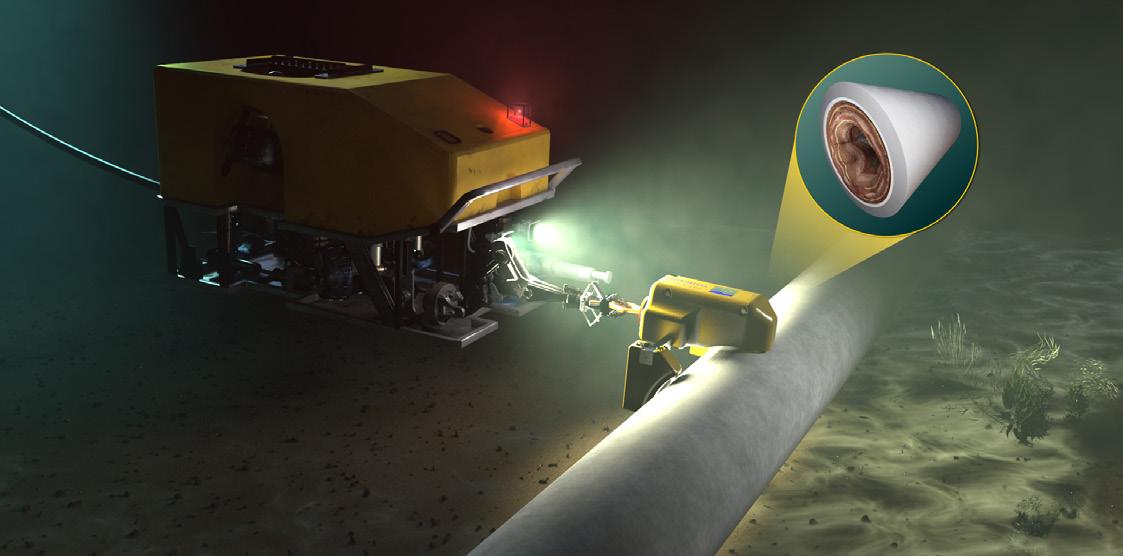

Once Explorer has located the area of the suspected blockage, Discovery can then be successfully deployed to accurately characterise its precise nature and extent.
Enabling data driven decisions
Utilising the tools and technologies offered by both Discovery and Explorer, operators can – using real-time data – plan preventative maintenance programmes and make informed and calculated decisions focused on how they can extend the lifespan of a pipeline past its original design life.
This cost-effective approach eliminates the additional costs associated with designing a new section of pipeline, recommissioning work or undertaking any pipeline modifications.
A commitment to innovation
With a pedigree in innovation and a number of first to market technologies, Tracerco is firmly committed to continued research and development on its industry leading technology suite. Discovery continues to be developed with the introduction of fast screening, baselines scans, corrosion analysis and continued development to enhance identification of blockages such as asphaltenes, sand, hydrate, and wax.
Figure 2. Tracerco’s DiscoveryTM technology on a pipe.
Figure 1. Tracerco’s ExplorerTM on pipeline scanning for deposit.
50 World Pipelines / JANUARY 2023
Figure 3. Tracerco’s DiscoveryTM insights showing extent of deposit in pipeline.
Midwestern’s M12H, M18H & M24H are the newest addition to our winch attachments. These winches are designed for hoisting purposes on excavators with lift capacities of 12,000/18,000/24,000 lb and attaches with a quick coupler to the excavator stick. The attachments use existing cab controls for all winch functions, ties into the auxiliary hydraulic circuit, and are easy to install.

Make your equipment more versatile by adding on one of our hoist winches.

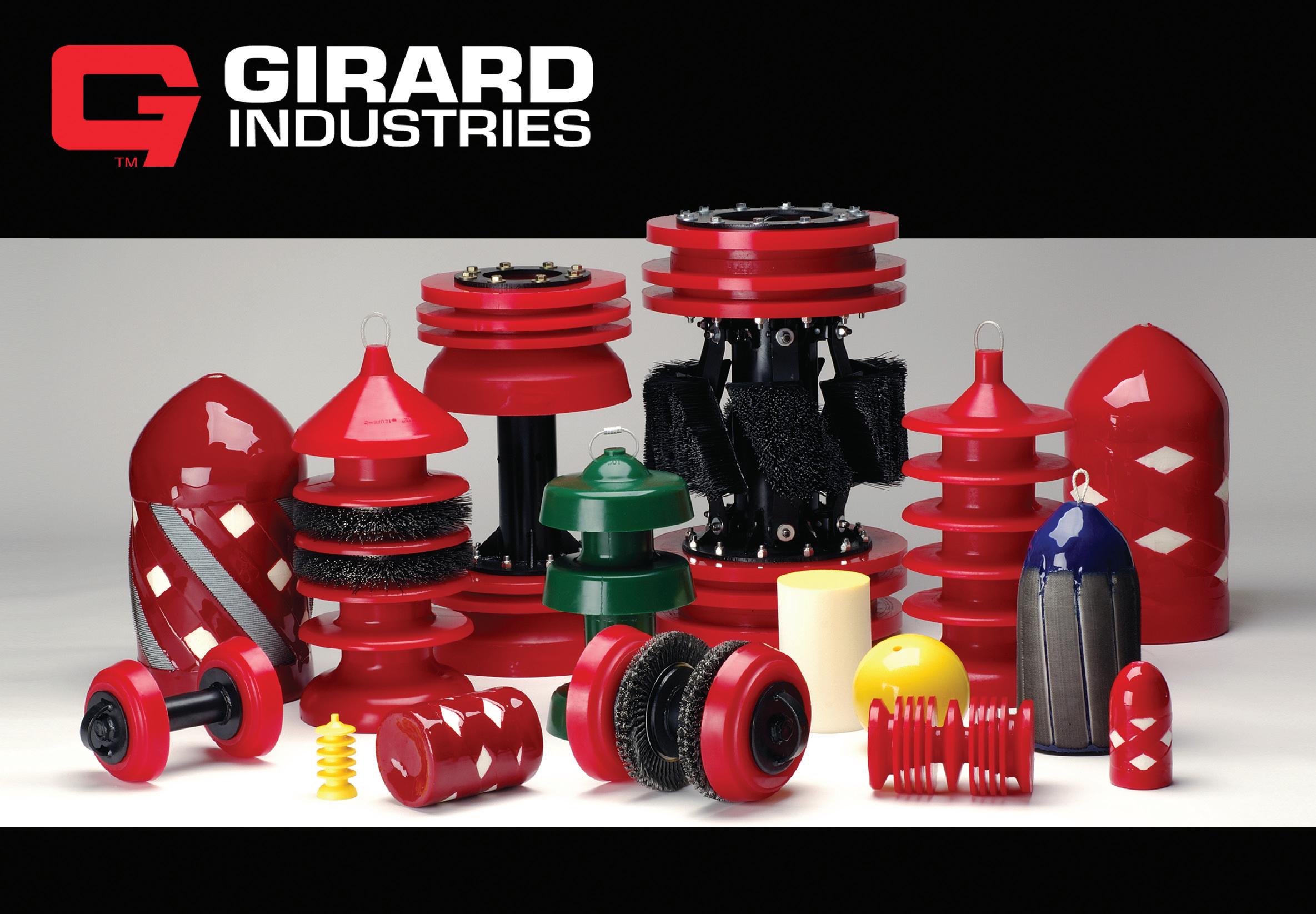
MIDWESTERN - built for the toughest jobs.

sidebooms.com I 918-858-4201










































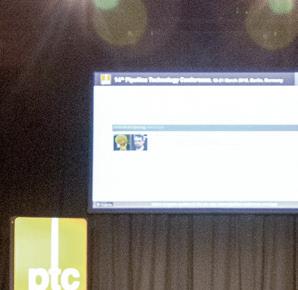



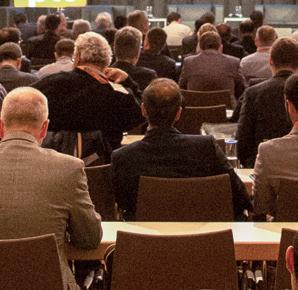

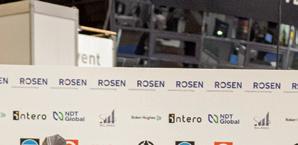












































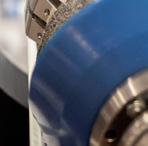

















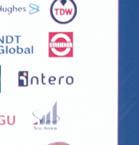





















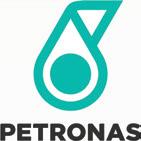


Connect • Share • Expand Meet the International pipeline community www.pipeline-conference.com DIAMOND SPONSOR PLATINUM SPONSORS GOLDEN SPONSORS SILVER SPONSORS #ptcBerlin 8–11 MAY 2023, BERLIN 18TH PIPELINE TECHNOLOGY CONFERENCE AN EVENT BY
ncreasing environmental regulations and the need to efficiently transport key resources are putting the pipeline industry in the public eye now more than ever. Pipeline contractors know that this means they must stay productive and efficient to ensure that they are meeting environmental standards, project timelines and other requirements. A key factor to help pipeline contractors meet these needs is having reliable equipment that allows them to move quickly from one project to the next.
One machine that is helping operators meet industry pressures and adhere to jobsite regulations is the electric auger boring machine. Auger boring machines have been a staple in the pipeline construction industry for decades because they help pipeline professionals efficiently bore through tough ground conditions, promoting uptime, productivity and efficiency. The newer electric version also allows contractors to comply with emerging emissions regulations while keeping crews comfortable and increasing operator performance.
To ensure contractors’ electric auger boring machines are operating efficiently, it is important to perform routine maintenance and correct care regimens. From reading the operator’s manual to completing end-of-day protection, the following three key electric auger boring machine maintenance tips can help pipeline contractors successfully install key
infrastructure that transports needed resources around the world.
Tip 1: use the operator’s manual

An easy, but important, maintenance step is to make sure that contractors are familiar with the operator’s manual. All preventative maintenance items and interval service checks based on timerelated milestones are outlined in the manual. This is important since the checklist of daily components to inspect after 10 hrs of machine use is different than the components to inspect after 500 hrs. For example, daily checks include visually inspecting the hydraulic hoses to see if they are frayed, and confirming that the electrical systems do not have any broken wires.
In addition to ensuring that the machine will be working when crews get to the jobsite, the operator’s manual also outlines important safety instructions. For example, safety features like the emergency stop button and the tethered stop switch should both be checked daily to ensure they are working properly and can help operators in case of an emergency.
Being familiar with the operator’s manual and following regular maintenance checkpoints will help minimise issues that may occur from daily operation and keep machines running as expected.
Richard Levings, American Augers, USA, outlines three electric auger boring machine maintenance tips to help pipeline contractors successfully complete projects.
53
Tip 2: practice regular equipment checks
Intentionally or unintentionally, contractors will work through minimal equipment damage, which can result in equipment failure and costly downtime. To prevent this, operators should regularly check the equipment alignment of components and visually inspect the equipment before they start a bore.
For example, if the alignment of the gear rack is not properly placed, then the pinion shaft – which is pressed up against the gear rack – can experience increased wear and tear, causing premature equipment issues. It is also important to maintain the proper alignment of the tooling when connected to the electric auger boring machine. Over time, the alignment of these pieces together can become warped, and the connection unstable, which can increase the risk of equipment damage.
To minimise the chances of working through minimal equipment damage, operators should bring extra parts that are
prone to wear and tear to the jobsite. For example, if the hex drive on the driveshaft gets worn, having extra equipment on hand allows operators to immediately replace the equipment, reducing the risk of machine failure and unnecessary downtime. Additionally, contractors can find themselves with detrimental equipment damage if the machine has any type of water, saturated soil, or a flooded bore pit. To help mitigate equipment damage and increase operator safety, contractors should have a drainage tile or pump in the pit to help minimise water damage and maximise jobsite efficiency.

Tip 3: don’t overlook end-of-day protection
An often-overlooked step that is not meant to be skipped is end-of-day maintenance. To keep machines working properly, contractors should clean their machines daily to reduce any dirt or debris that may impact machine efficiency. When operators are not on the jobsite, contractors can invest in a vandal cover for additional machine protection from any jobsite intrusions or unwanted interruptions caused by an outside source.
Benefits of a smooth-running machine
A smooth-running electric auger boring machine can provide pipeline contractors with an abundance of benefits, especially at a time when the need to increase efficiency is at an all-time high and environmental regulations are becoming more stringent.
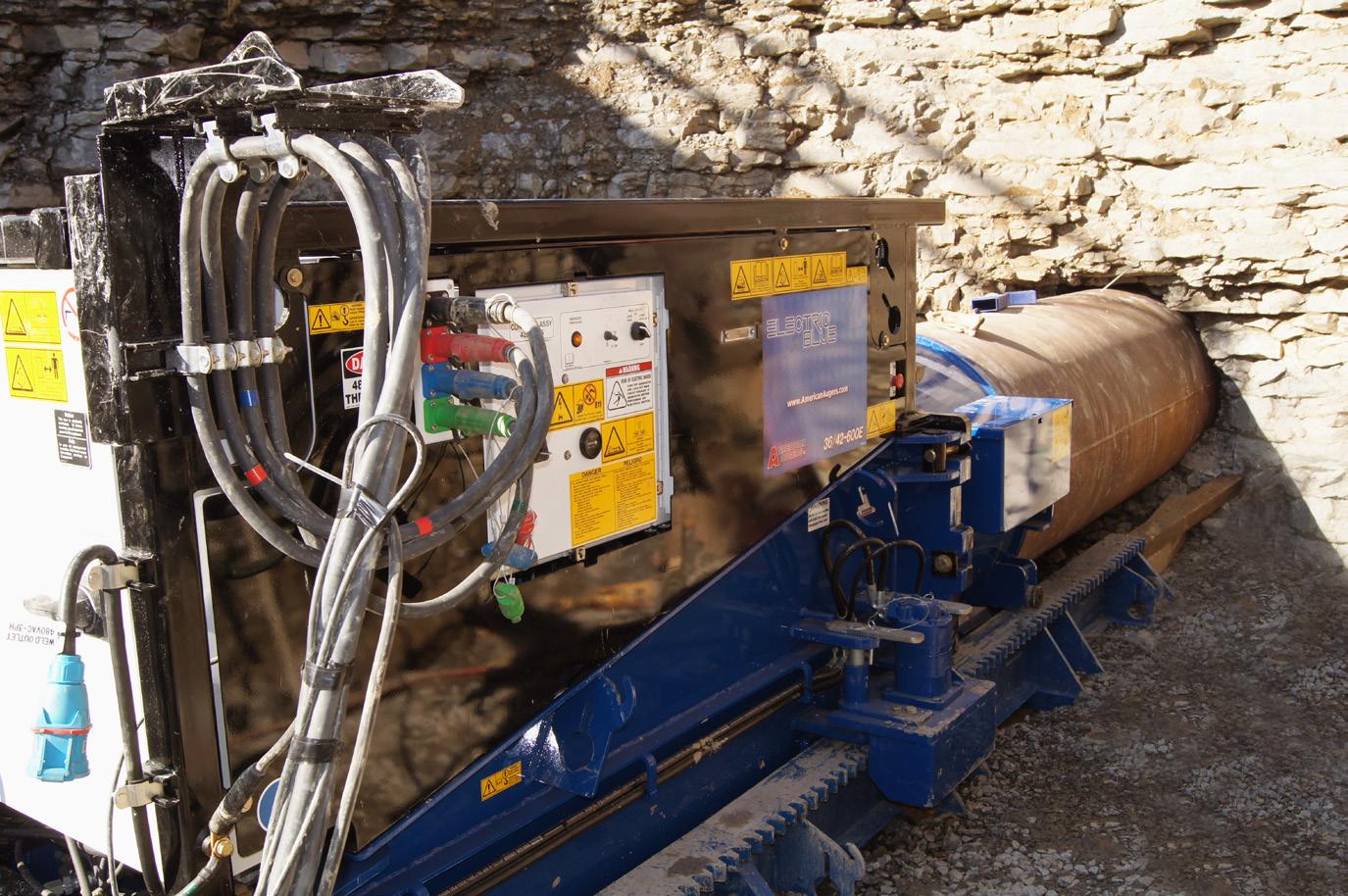
Minimise fumes
Traditional diesel-powered auger boring machines produce exhaust and a lot of noise. An electric auger boring machine creates zero emissions and significantly less noise, allowing contractors to work around city ordinances and bid for jobs that may require emission standards compliance. This also allows crews to do their jobs without worrying about breathing in fumes or having to pause work for health reasons. An electric option also saves costs by reducing the need for air monitoring or circulation equipment.
Reduce jobsite noise
The loud whir of equipment is a mainstay on any construction site – and too often a factor that limits when a contractor can work. That’s because many cities have noise ordinances in place that only allow pipeline crews to run their equipment during certain hours of the day. Electric auger boring machines are significantly quieter than their diesel-powered counterparts, allowing contractors to work longer on jobsites, with less risk of violating ordinances.
Figure 1. Properly maintaining electric auger boring machines allows pipeline contractors to efficiently bore through tough ground conditions.
54 World Pipelines / JANUARY 2023
Figure 2. Electric auger boring machines allow contractors to comply with emerging emissions regulations while increasing operator performance.

